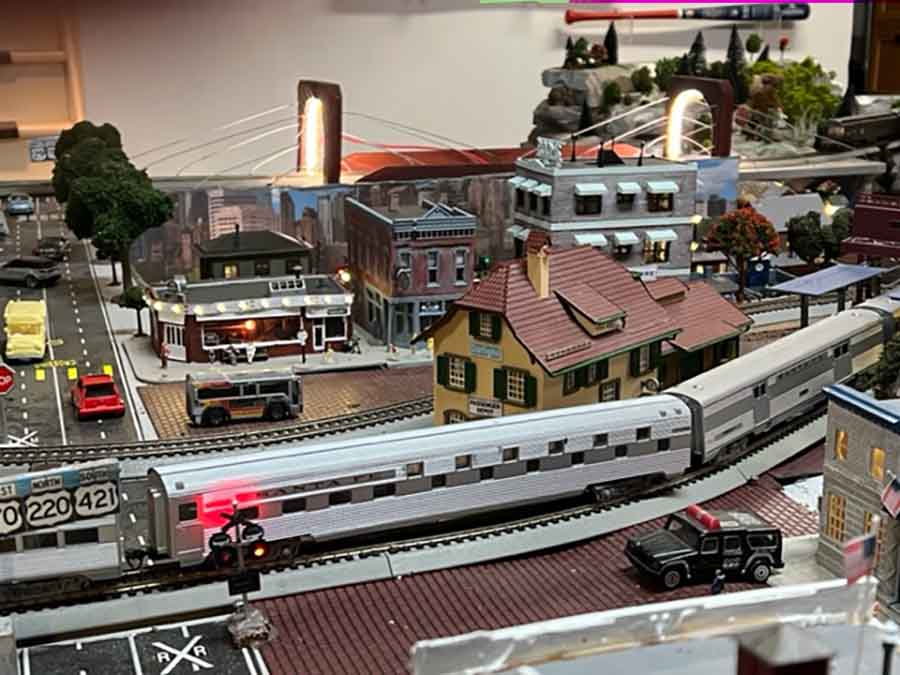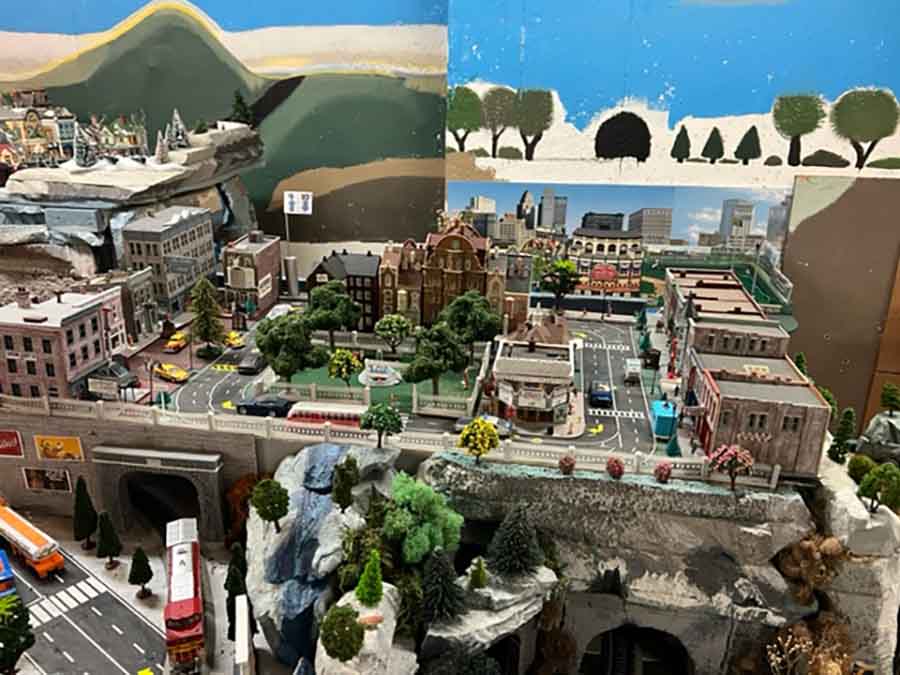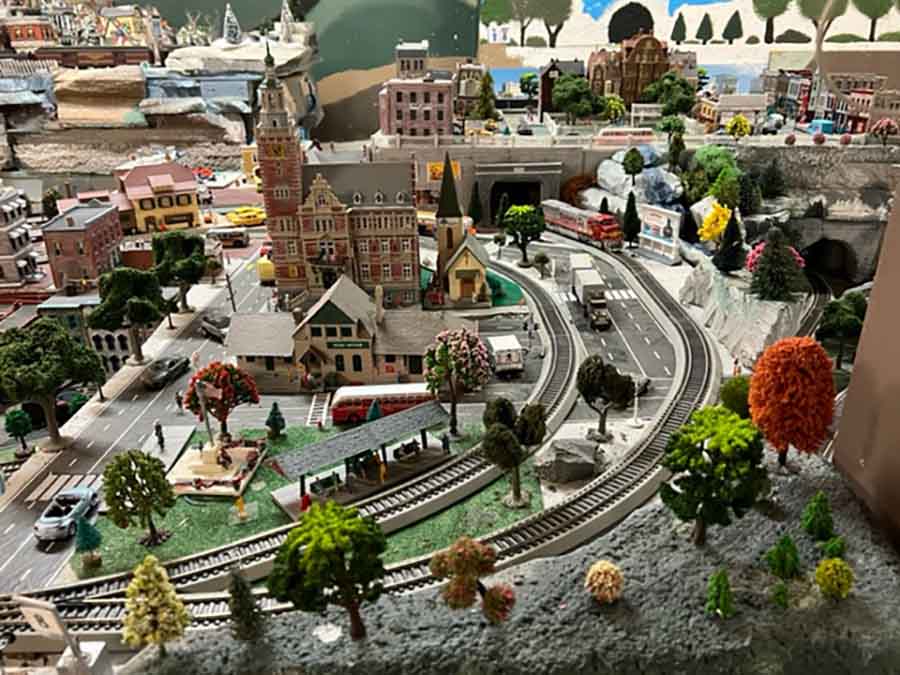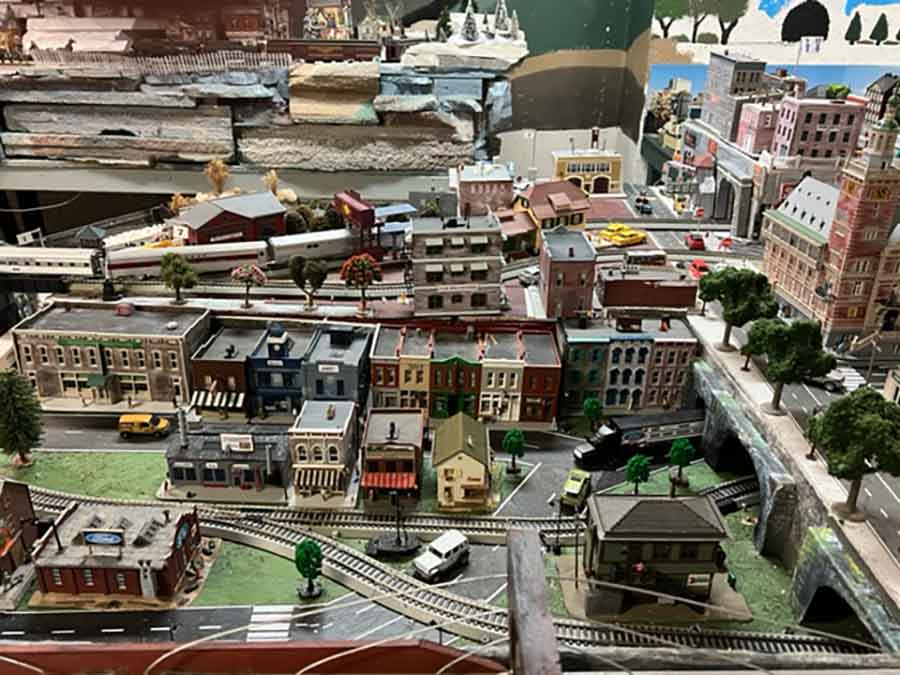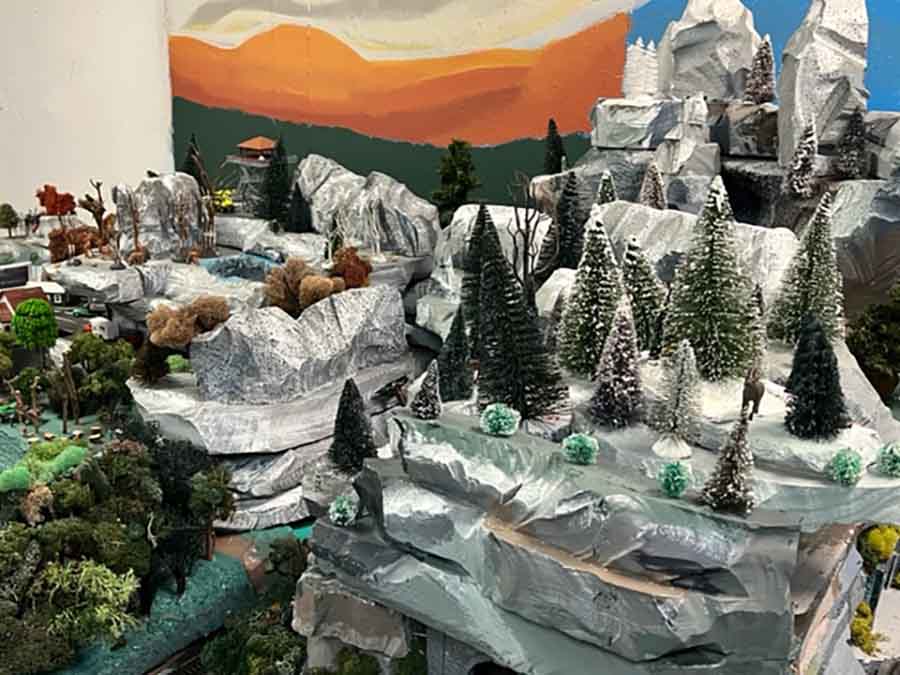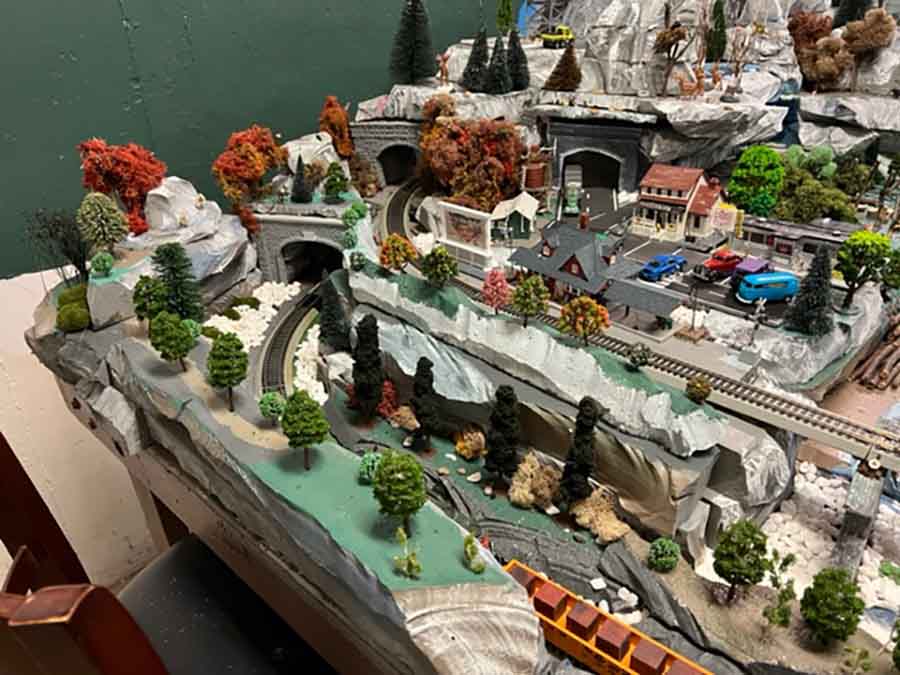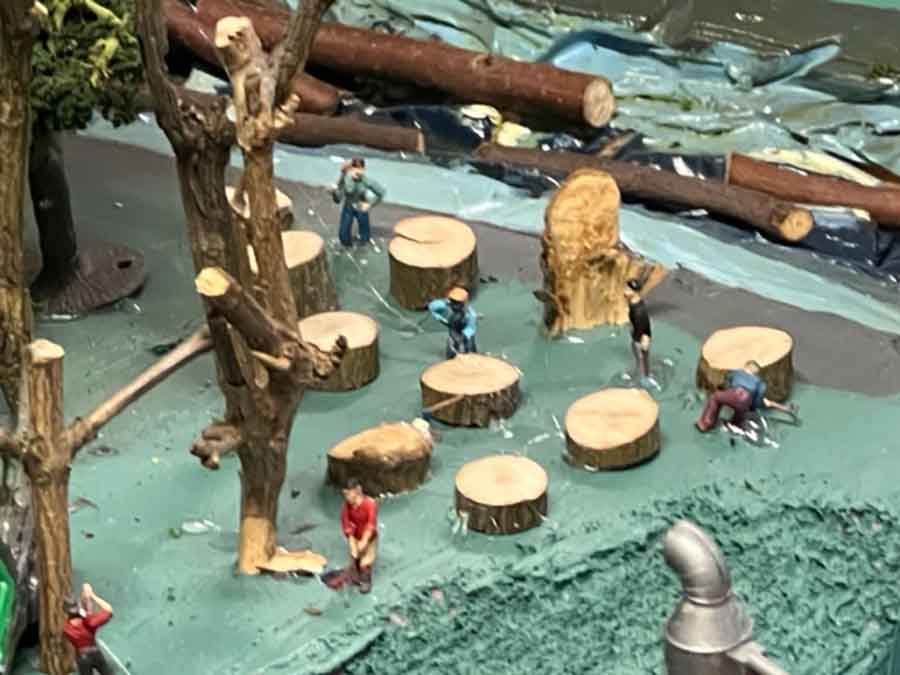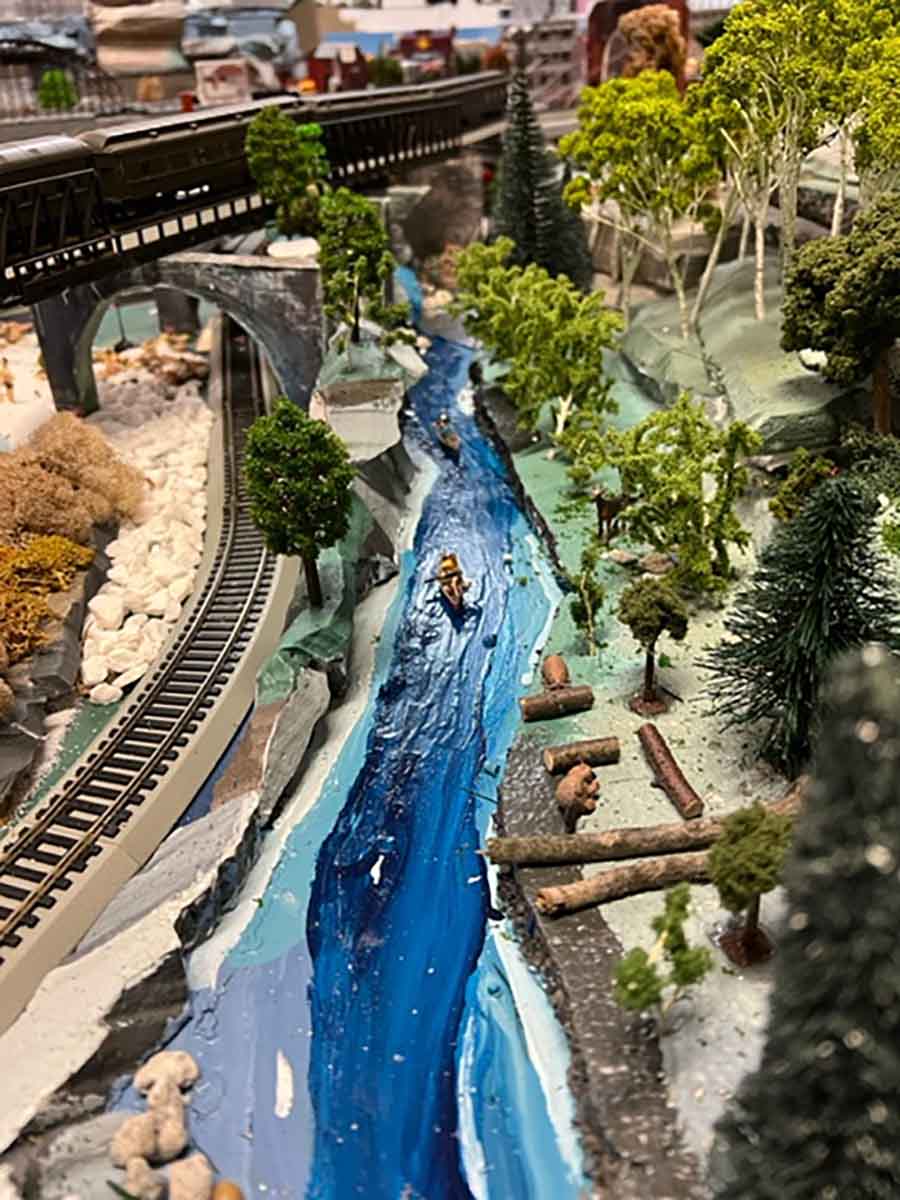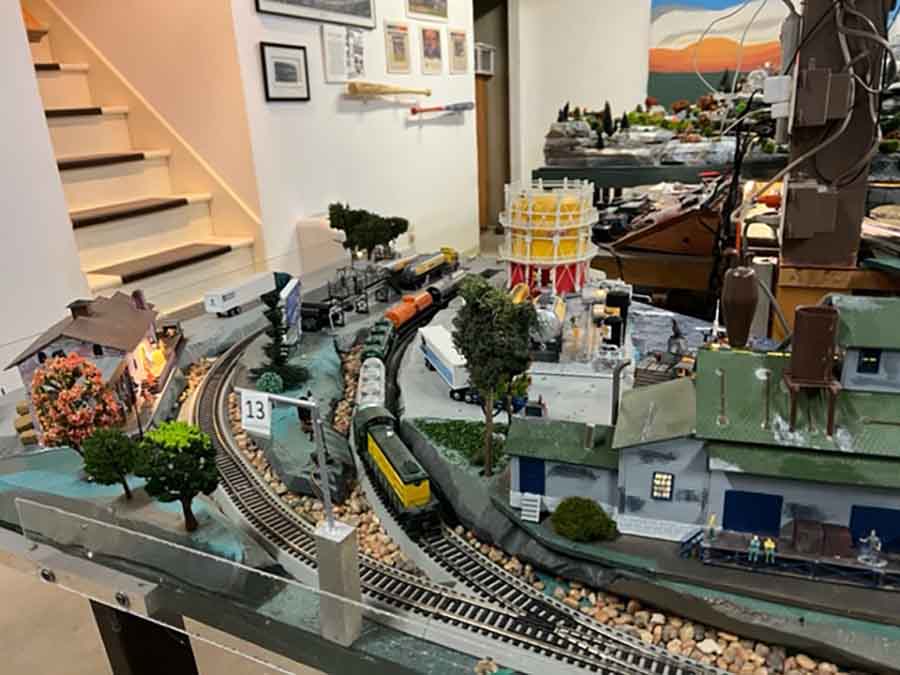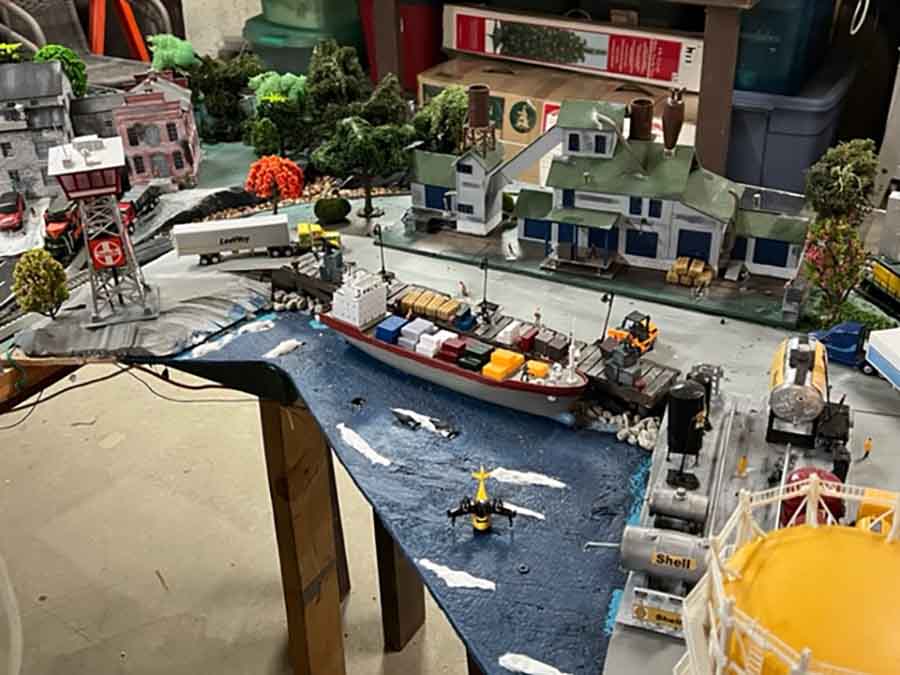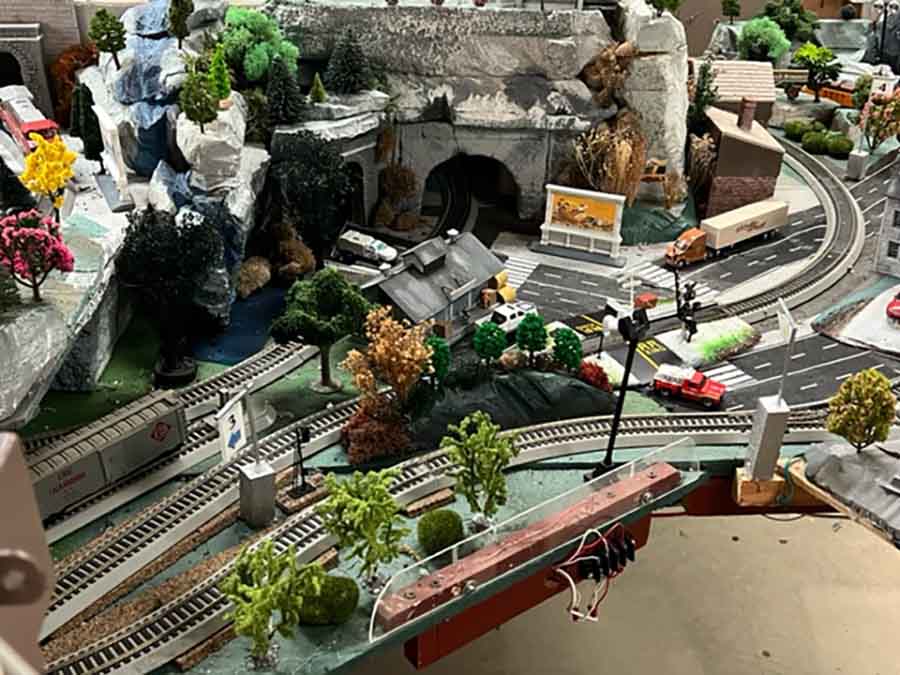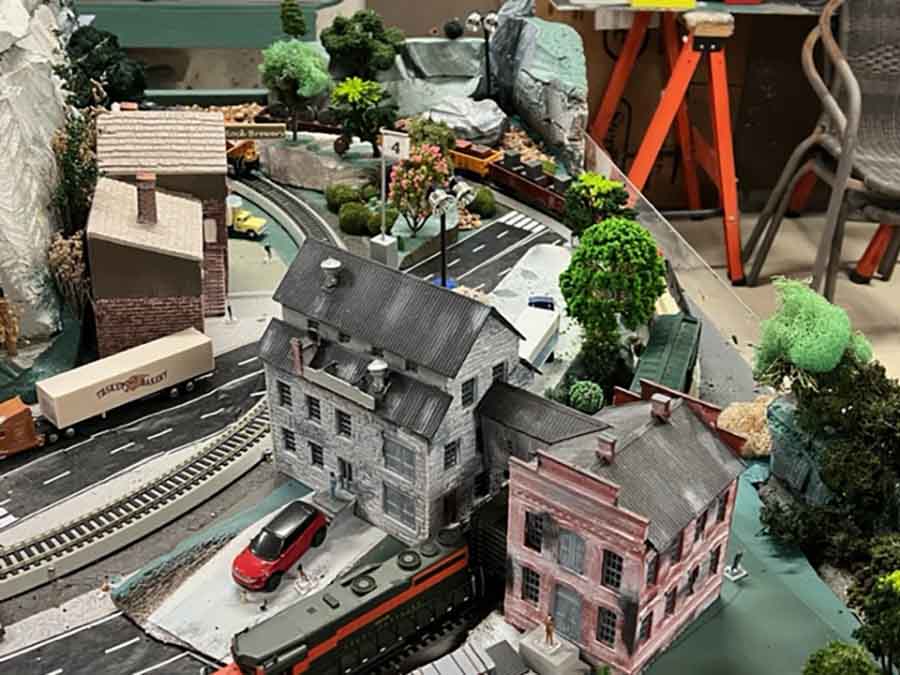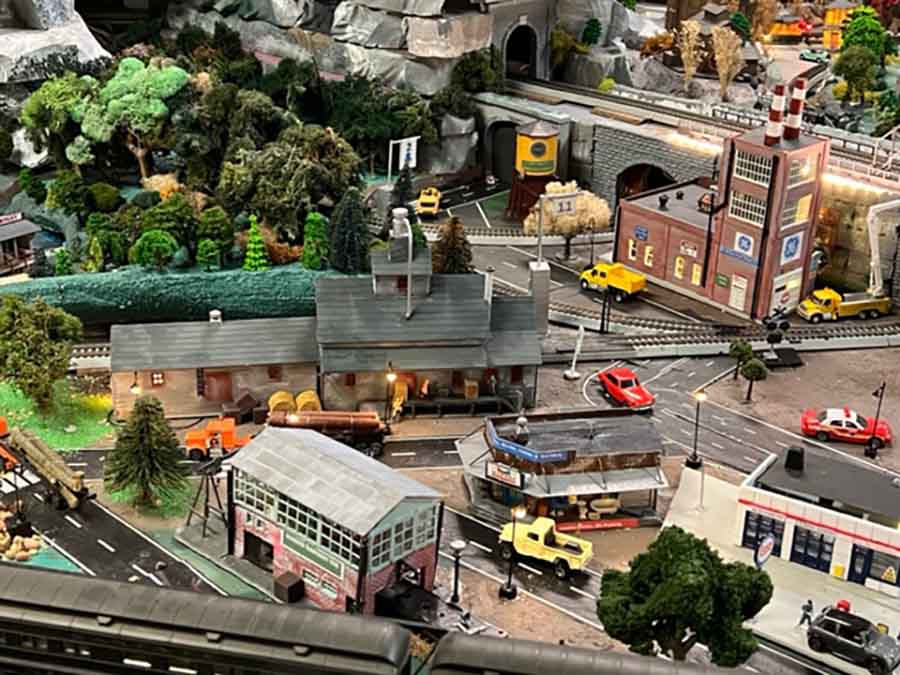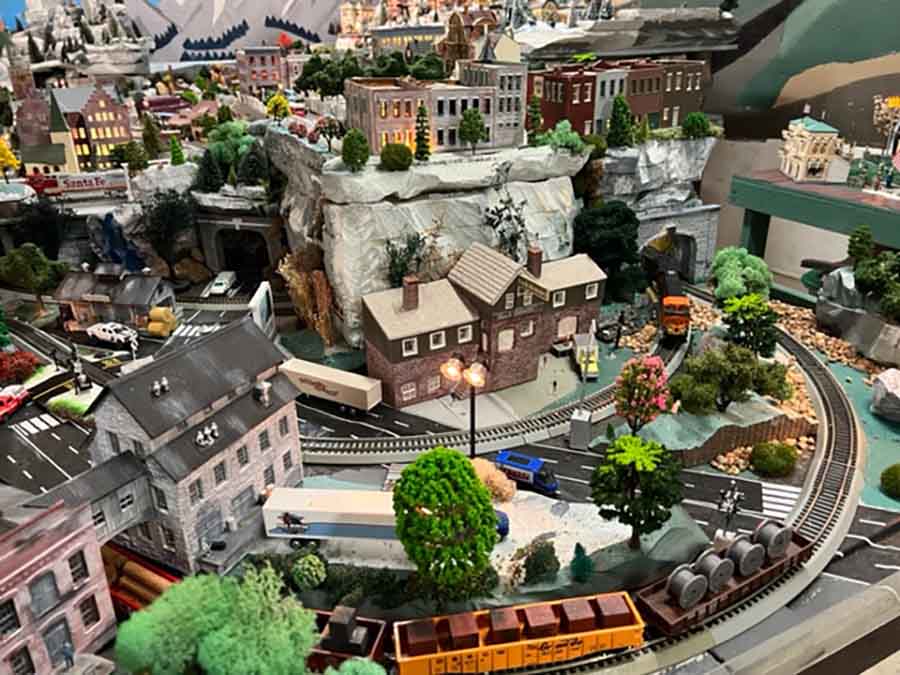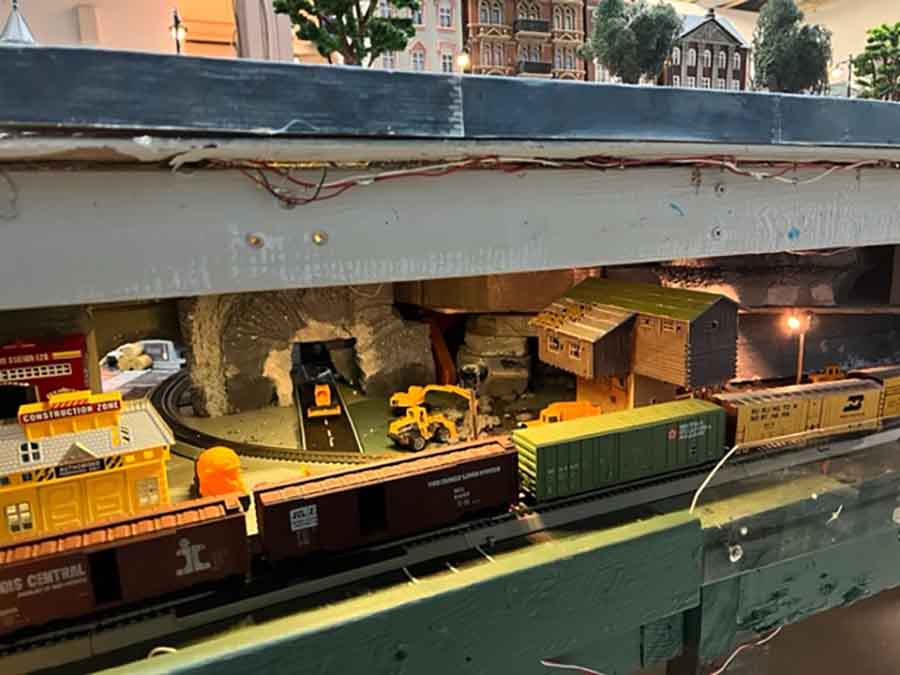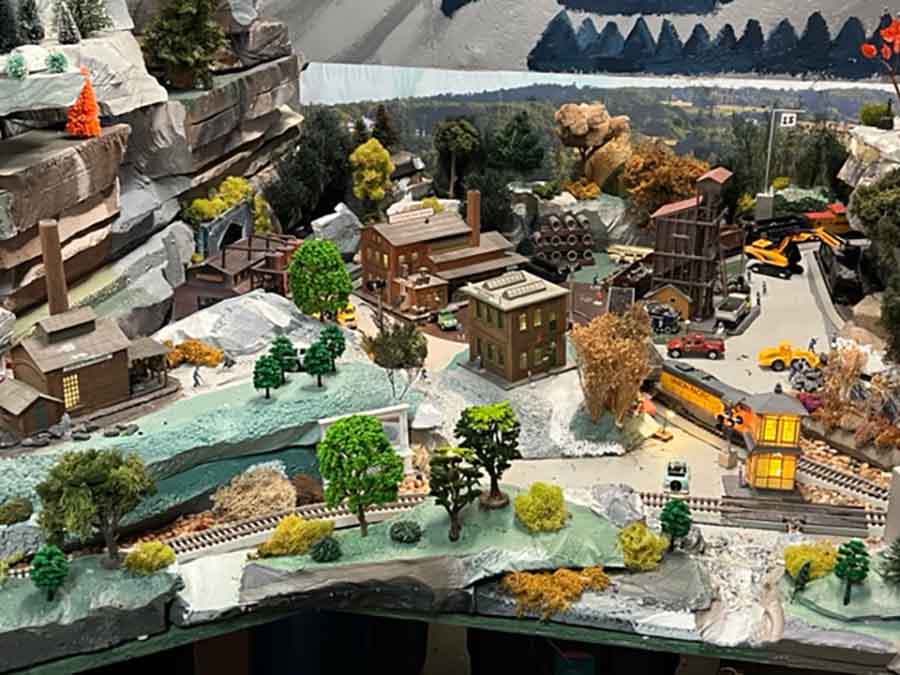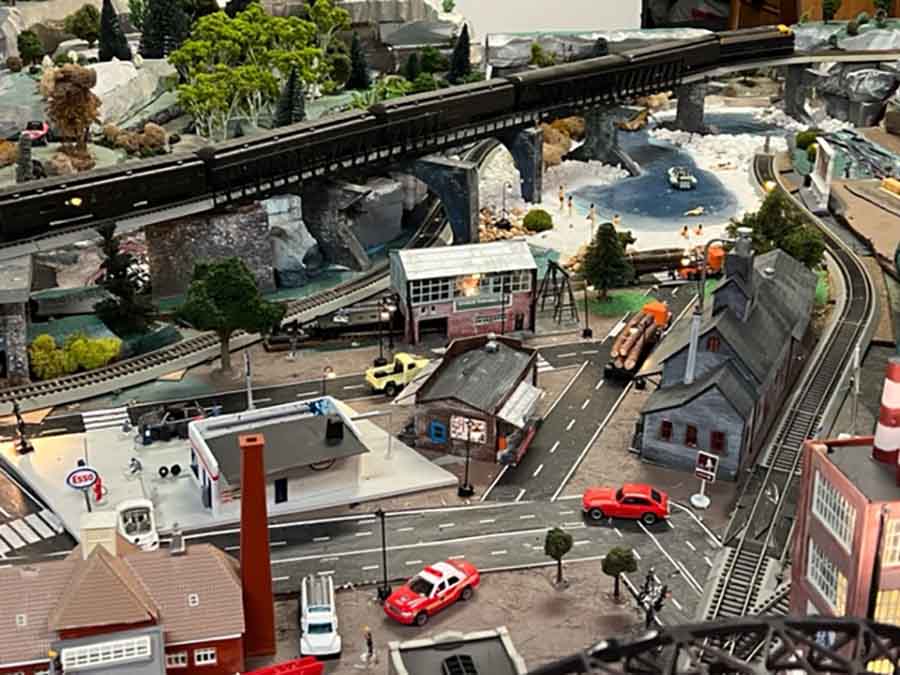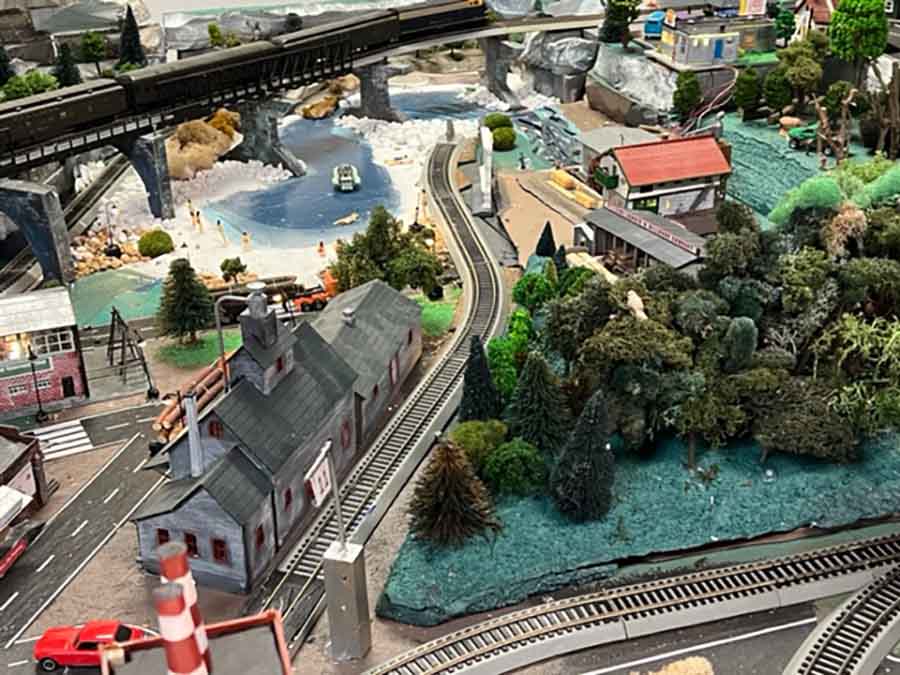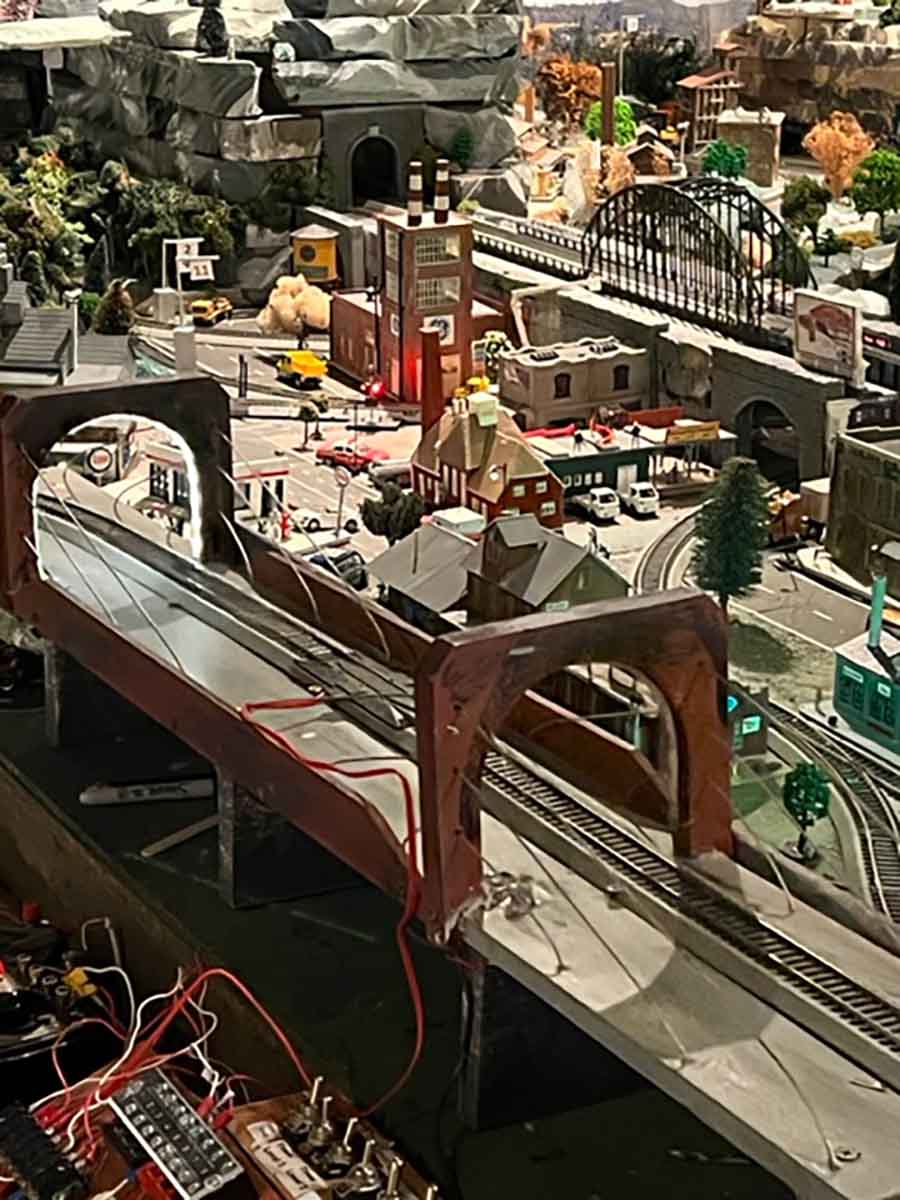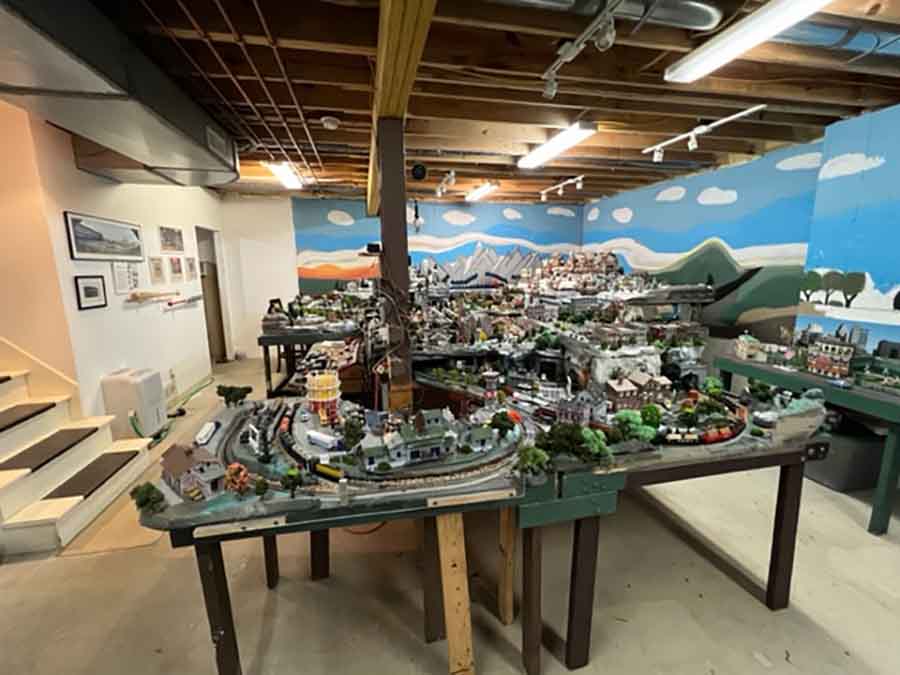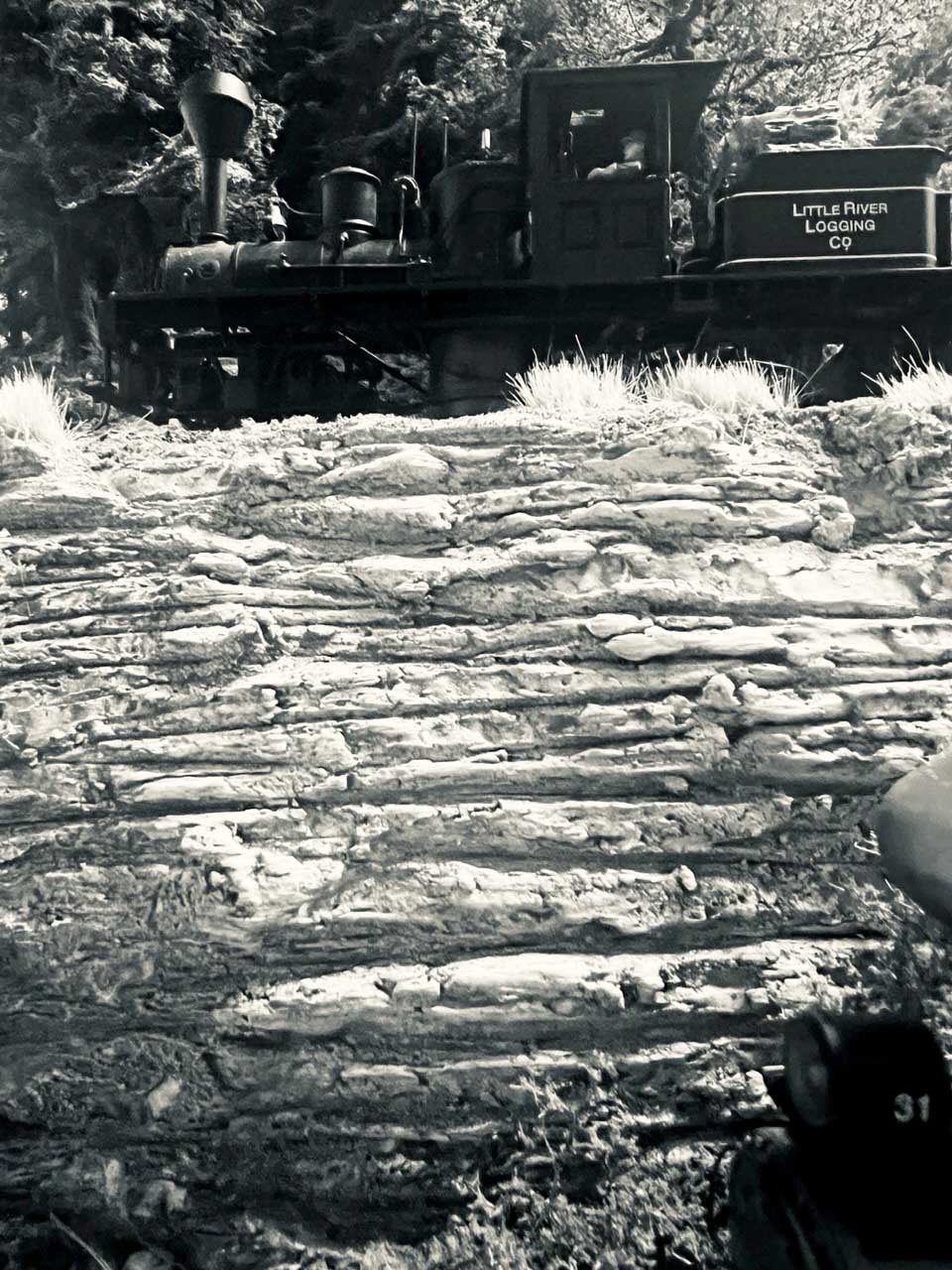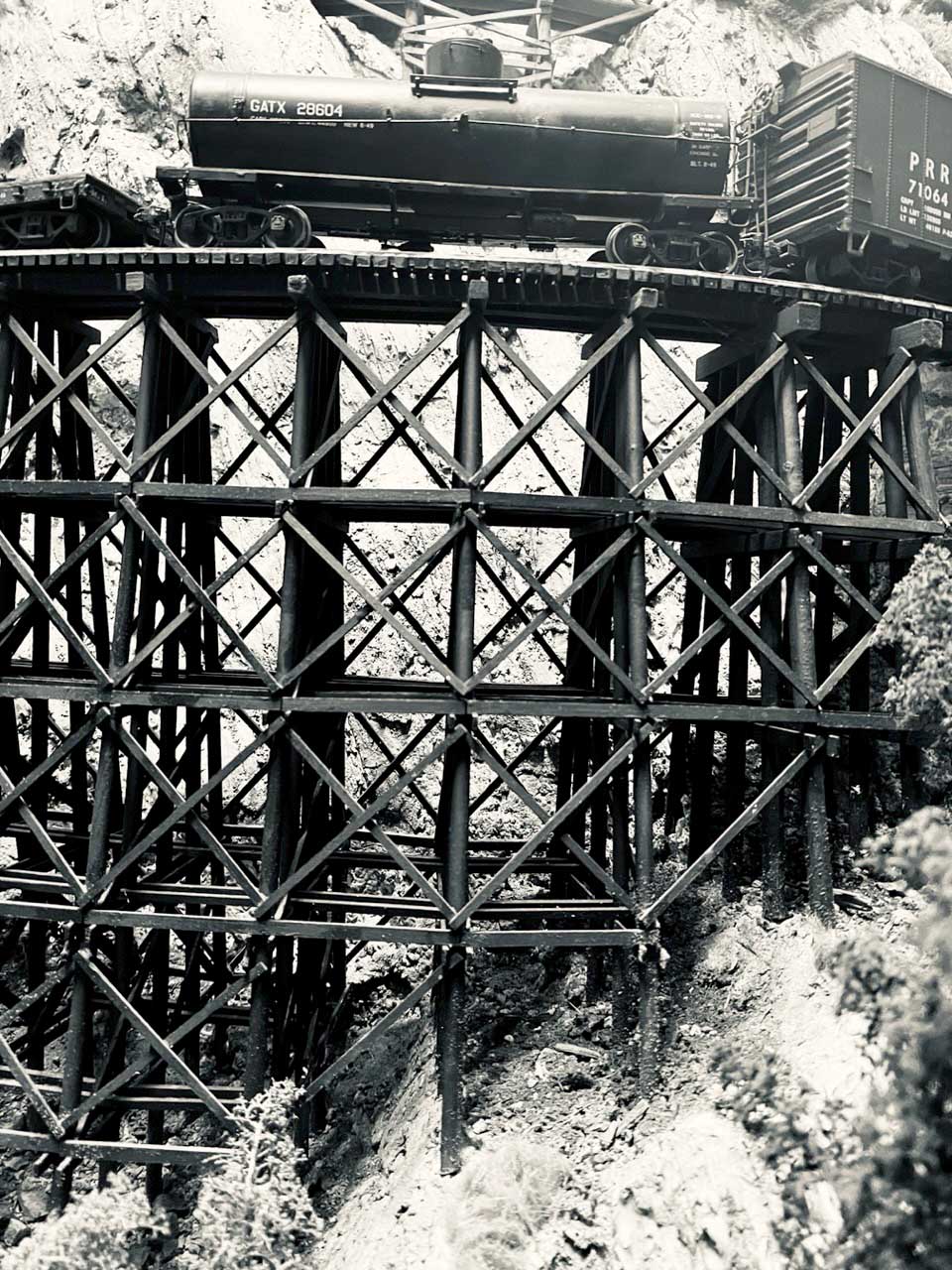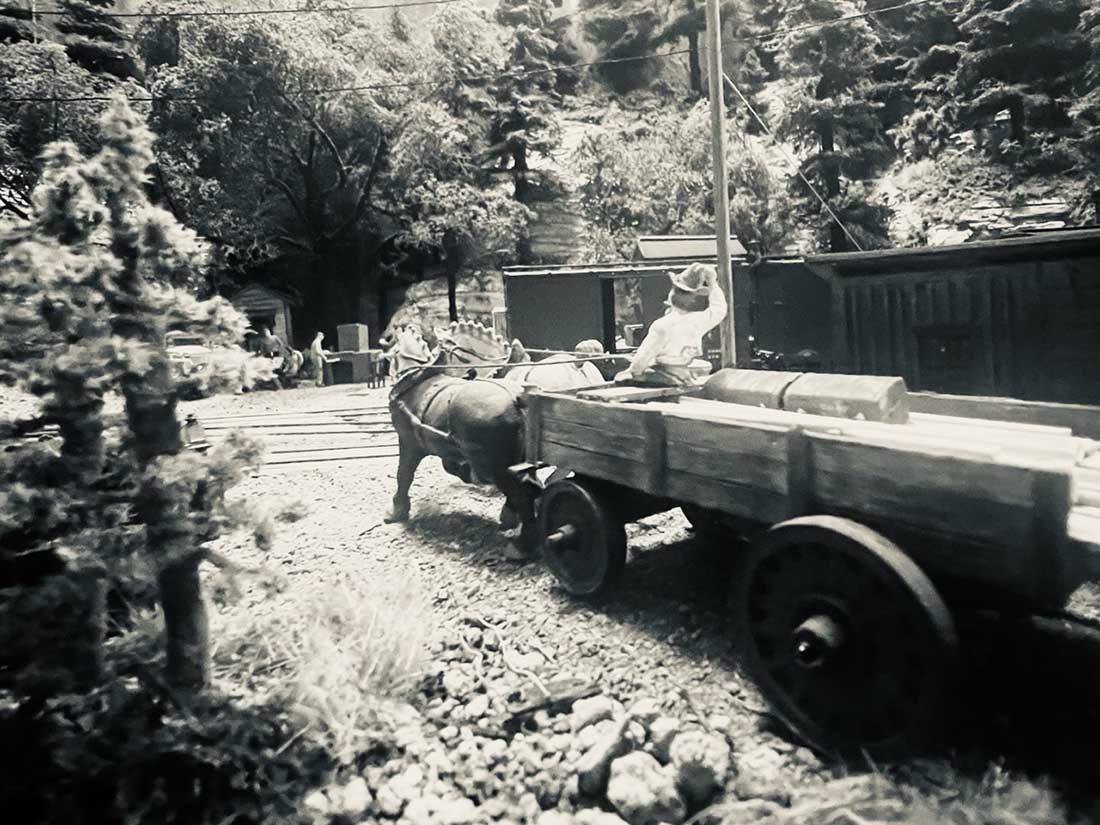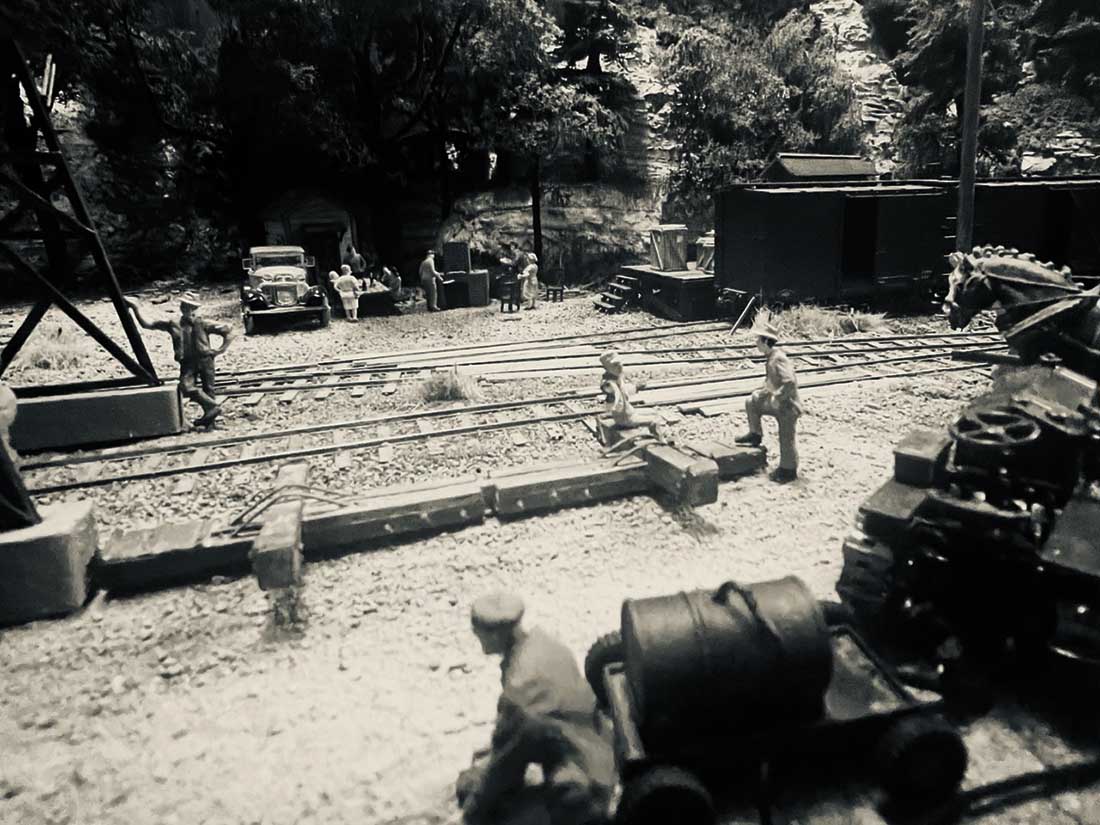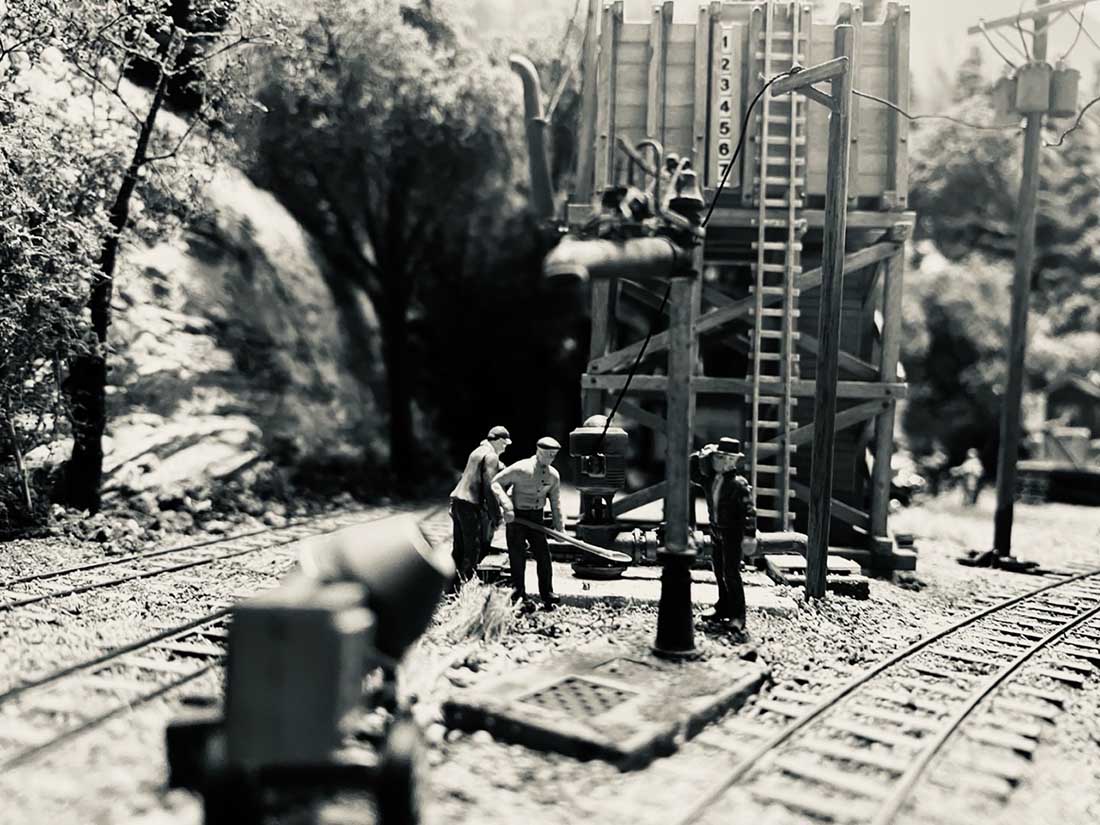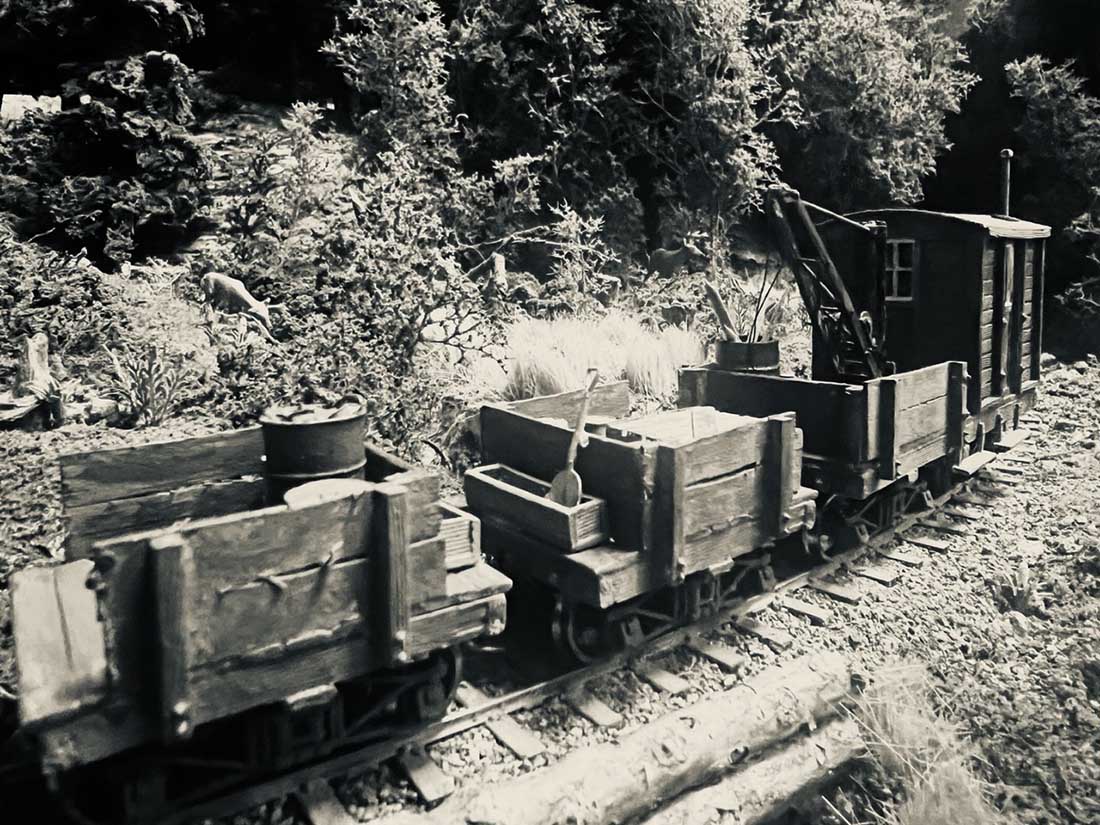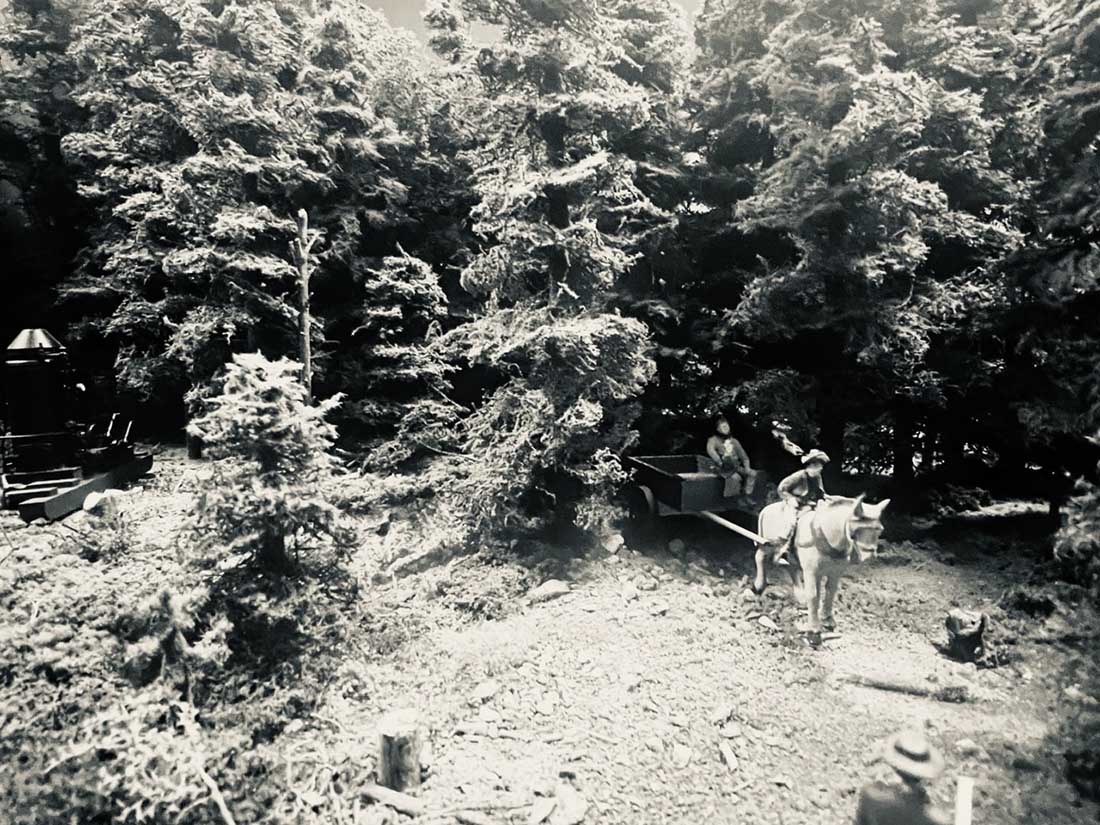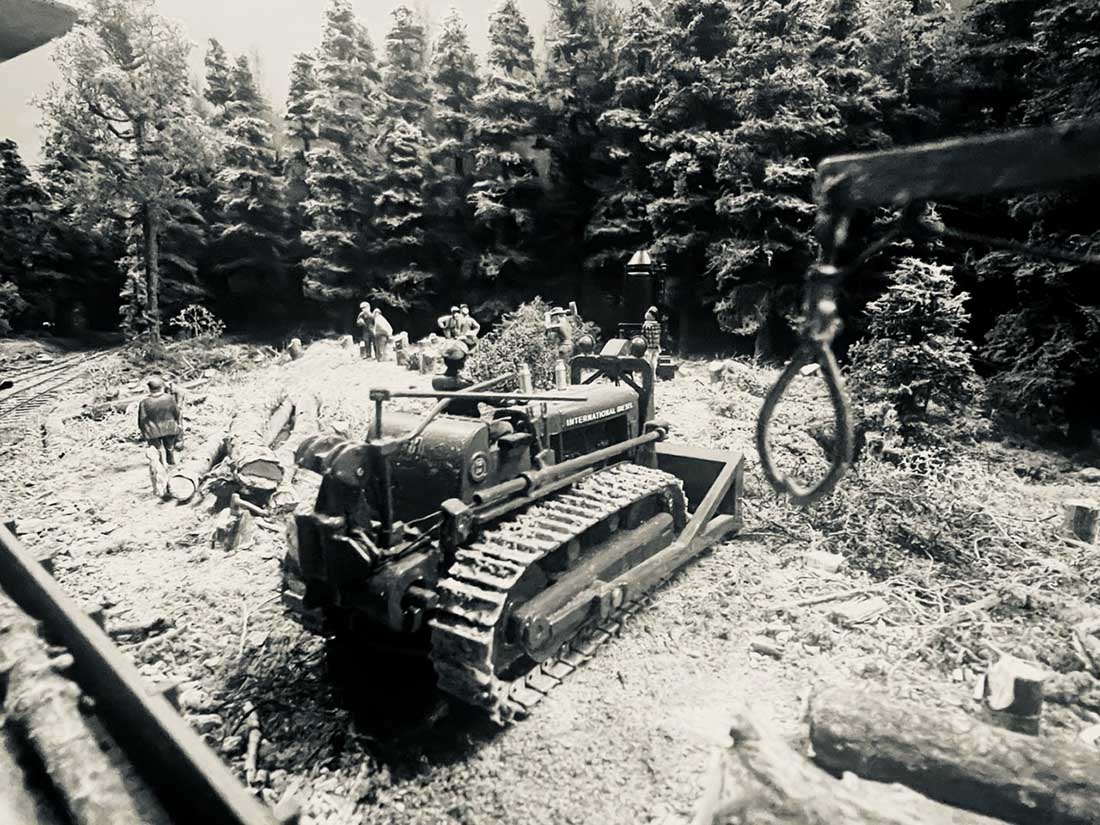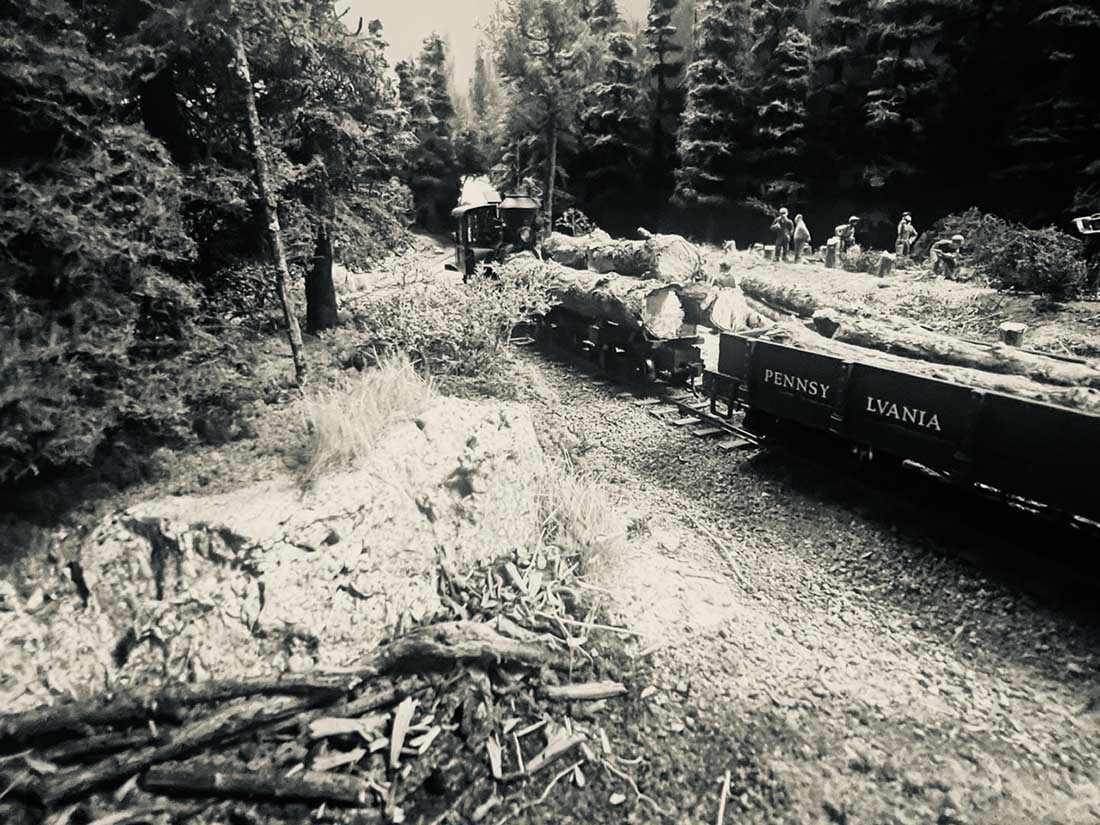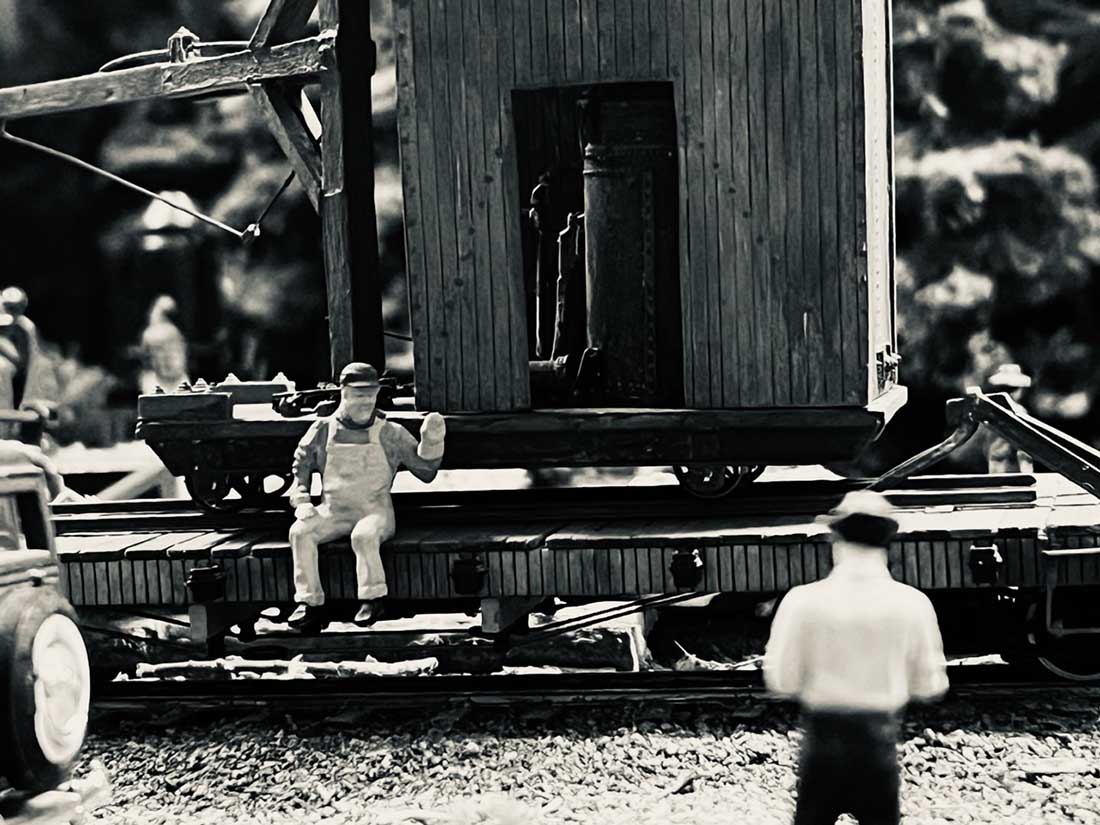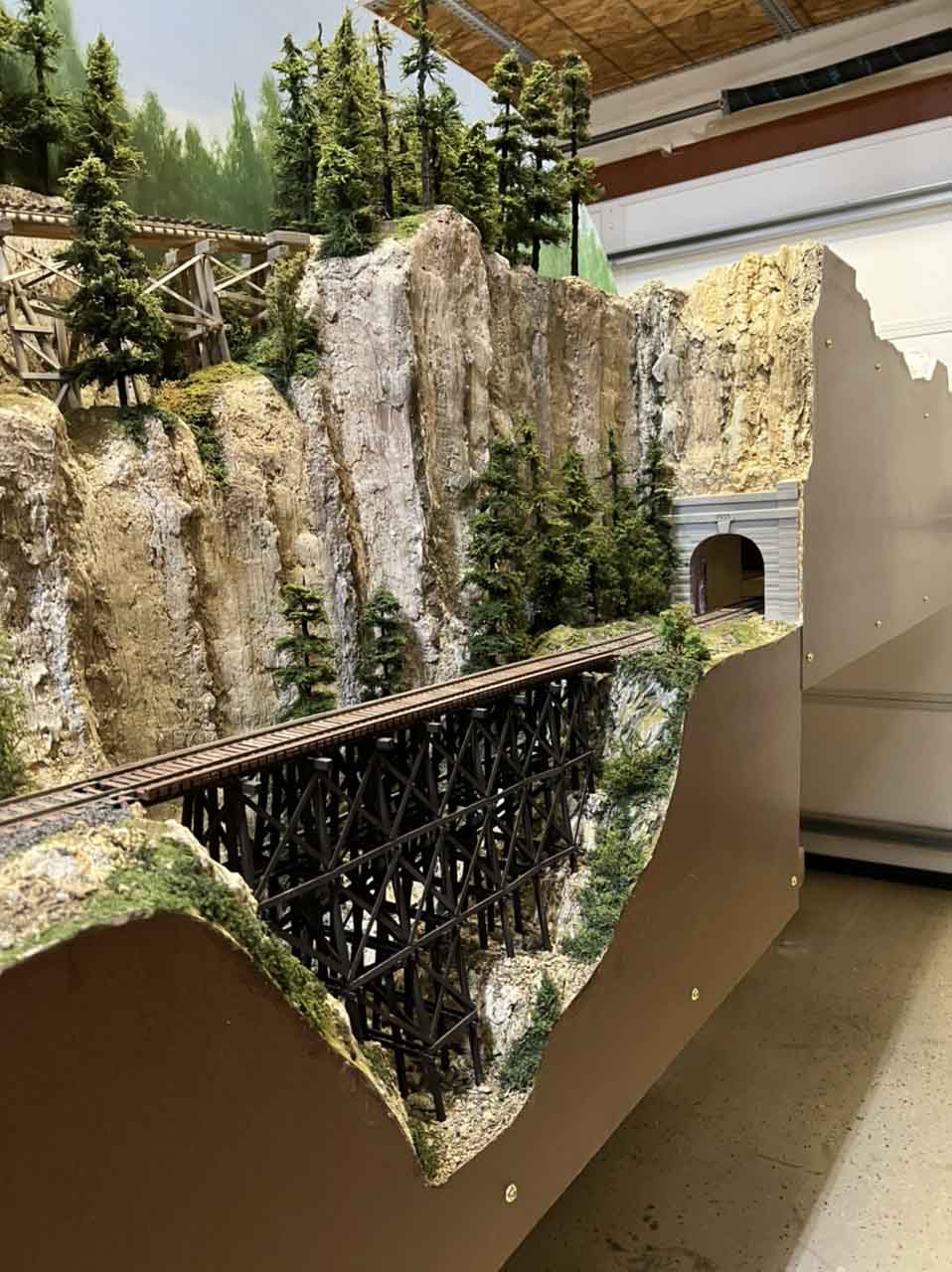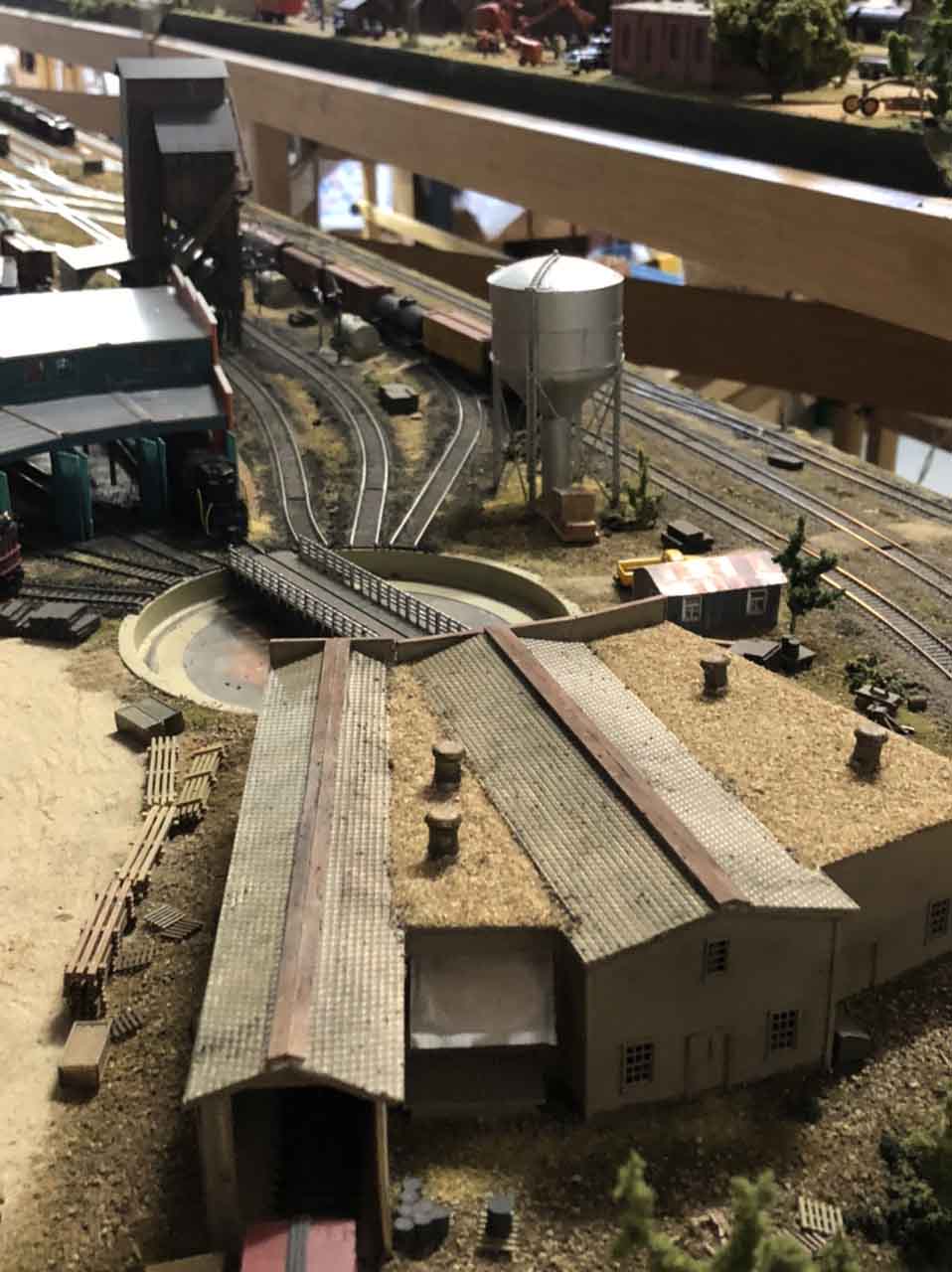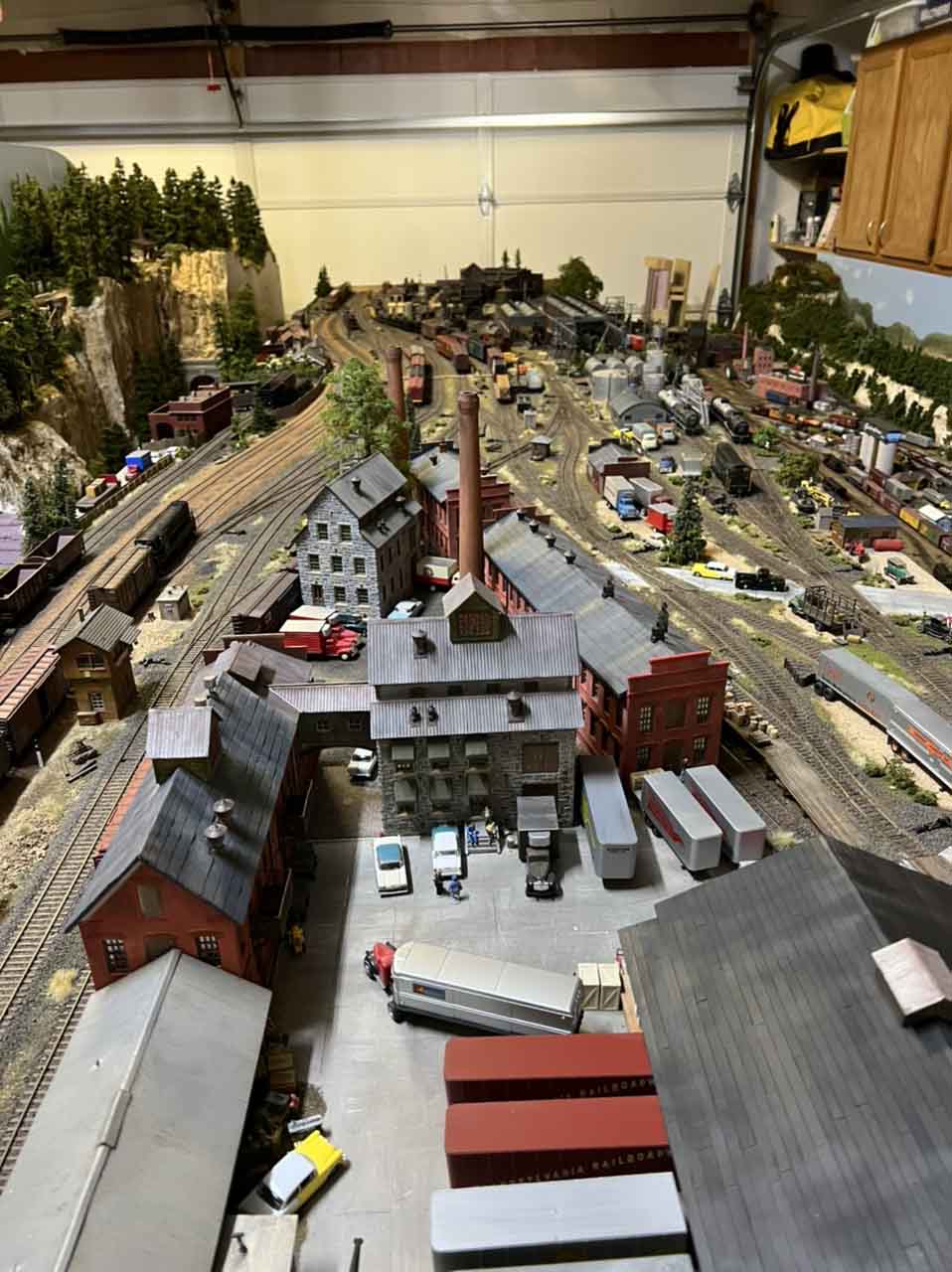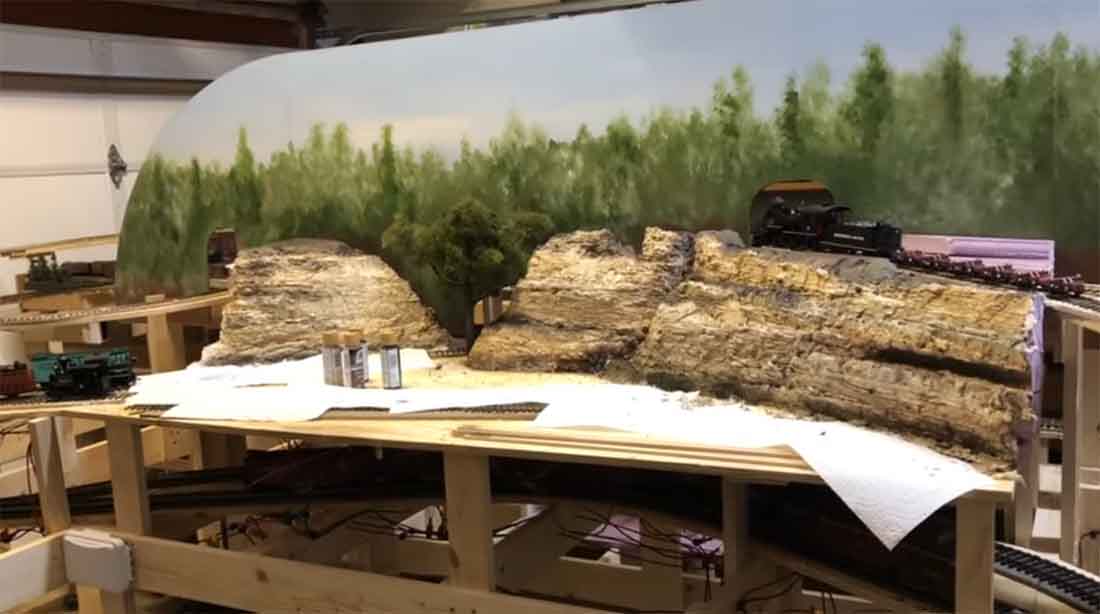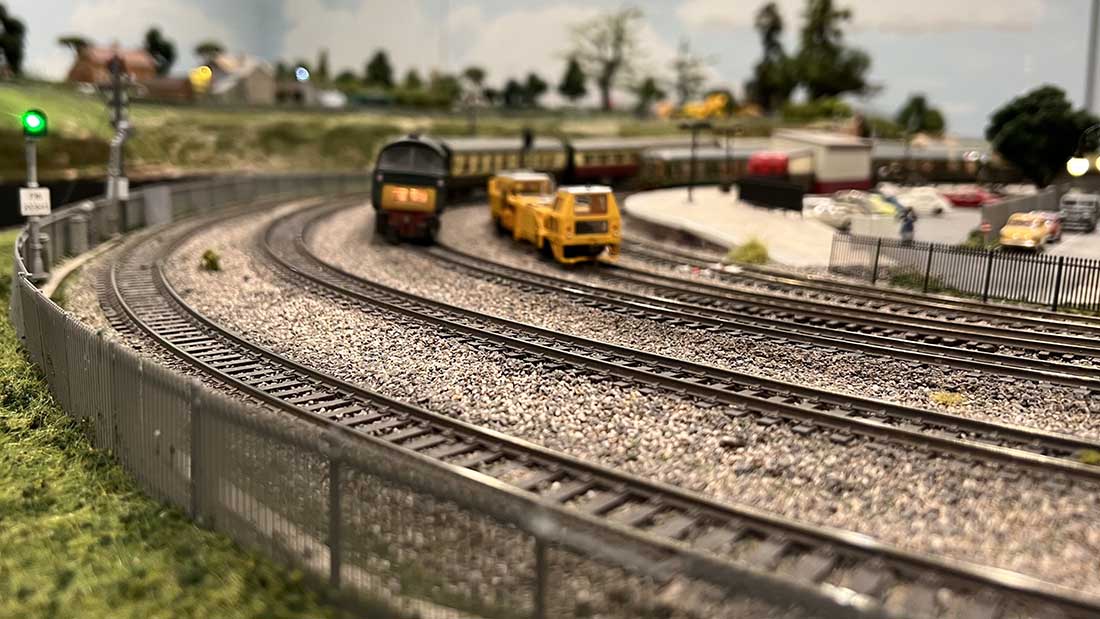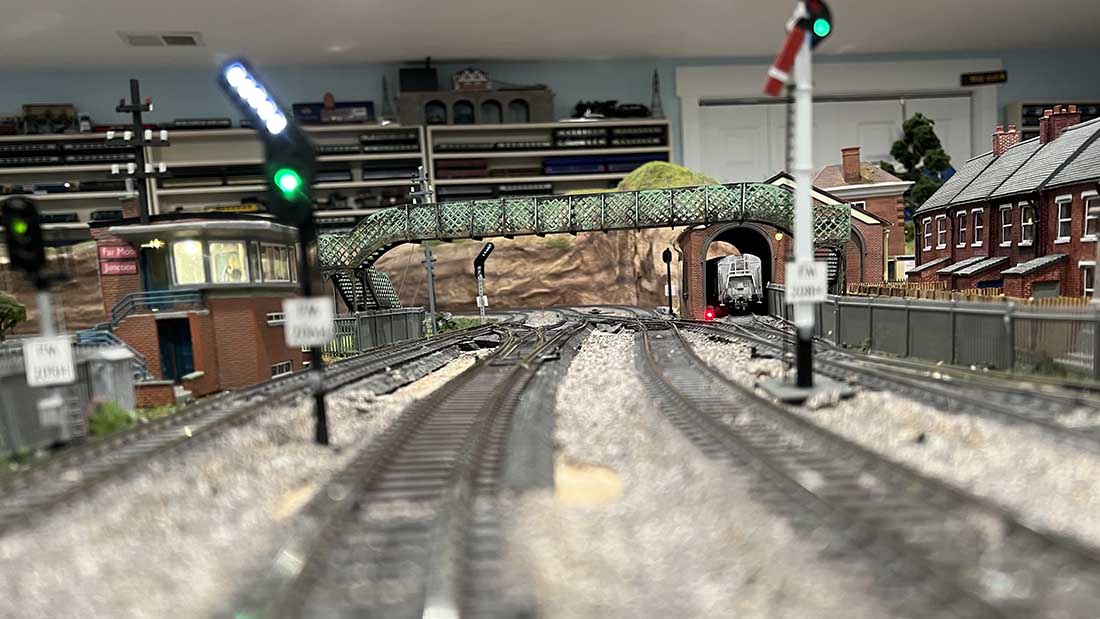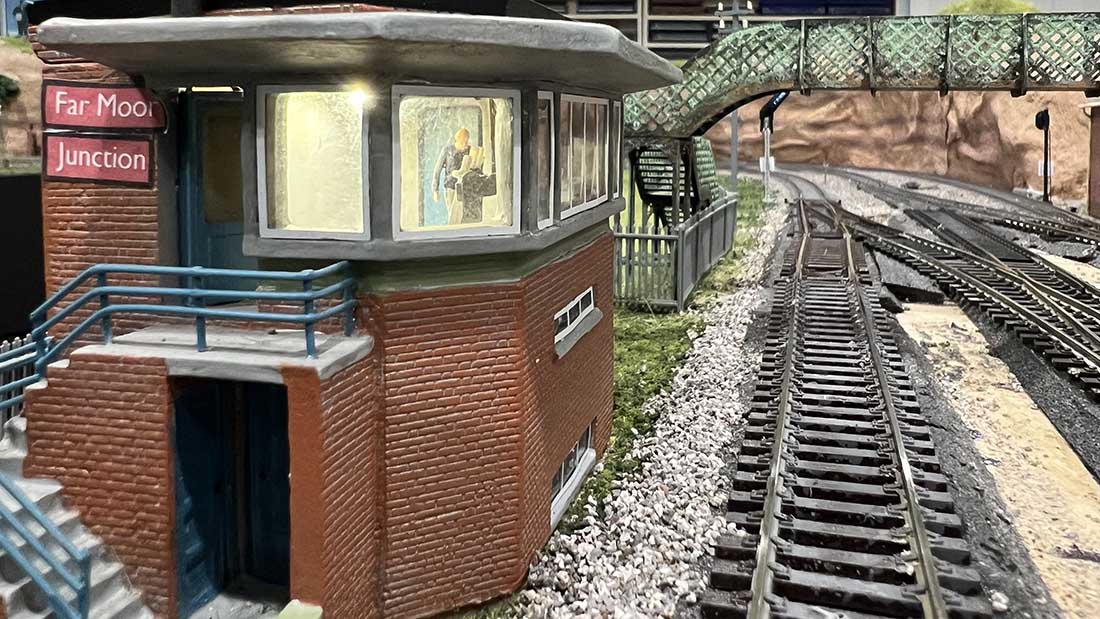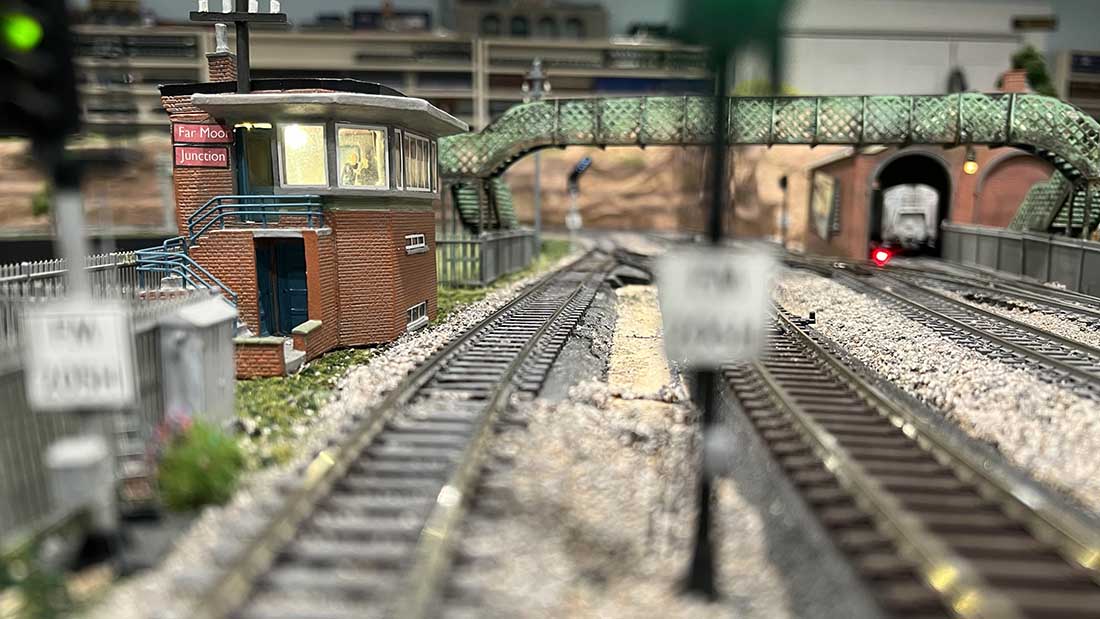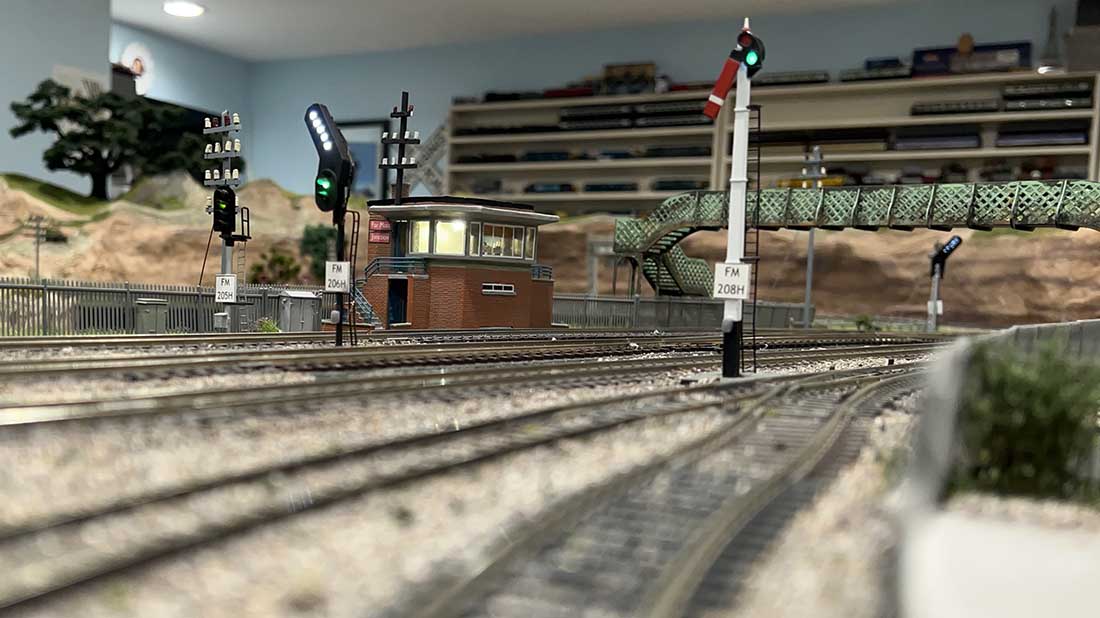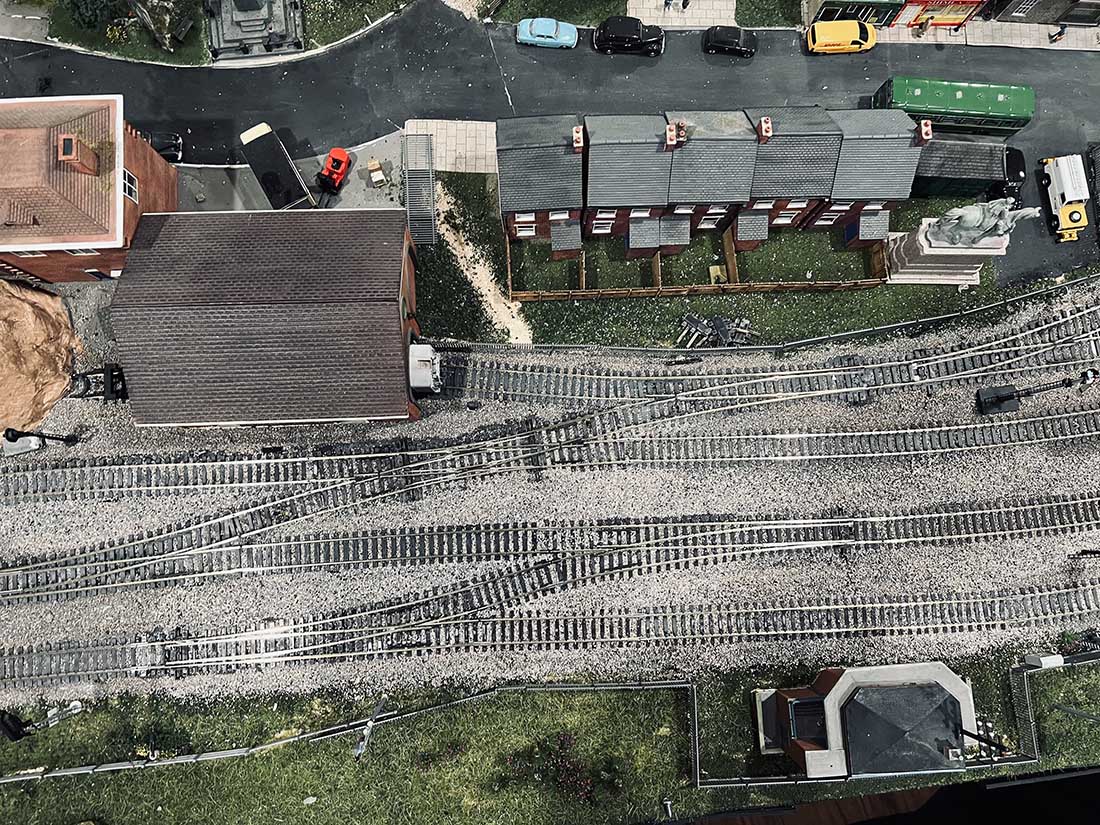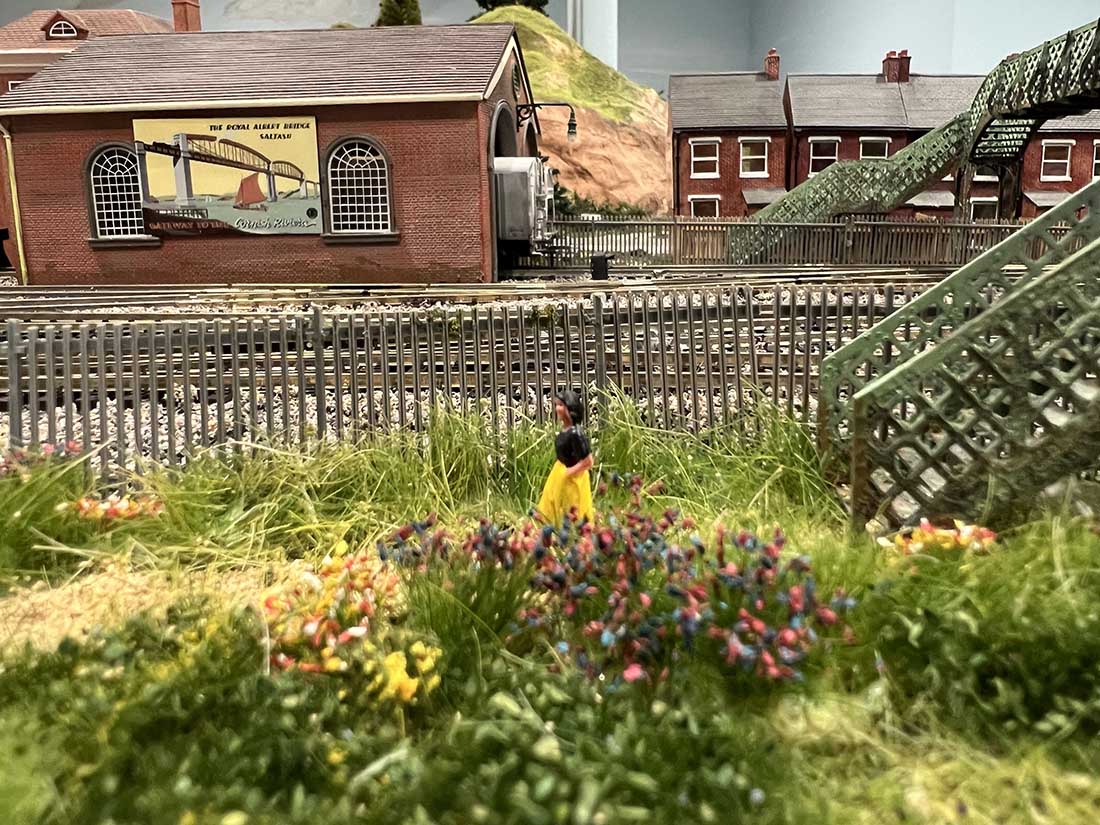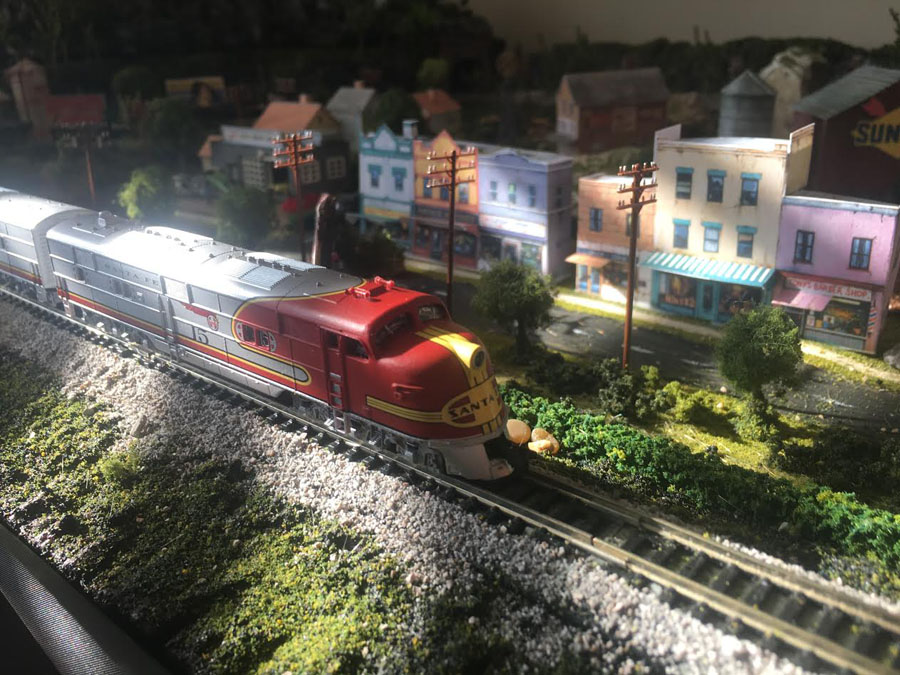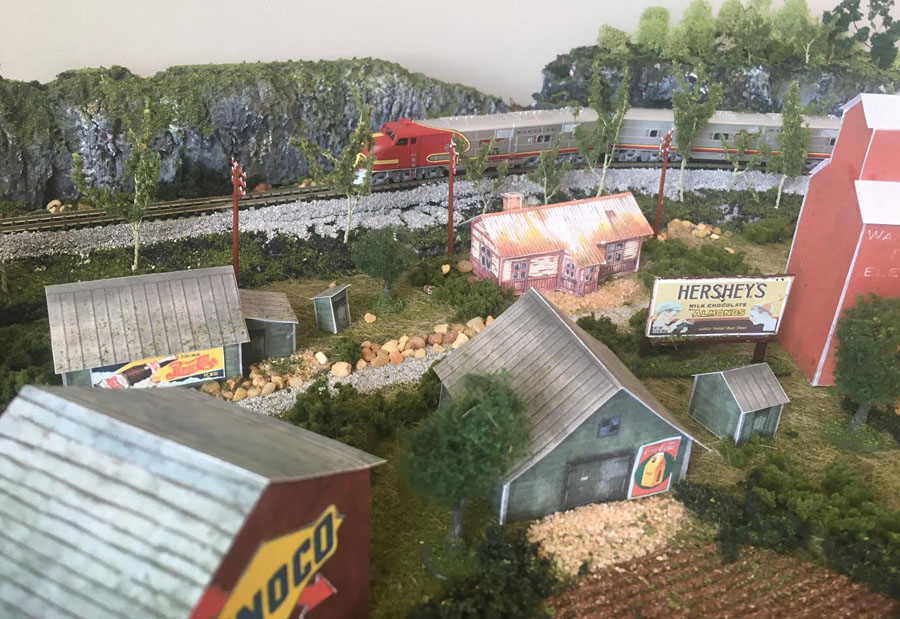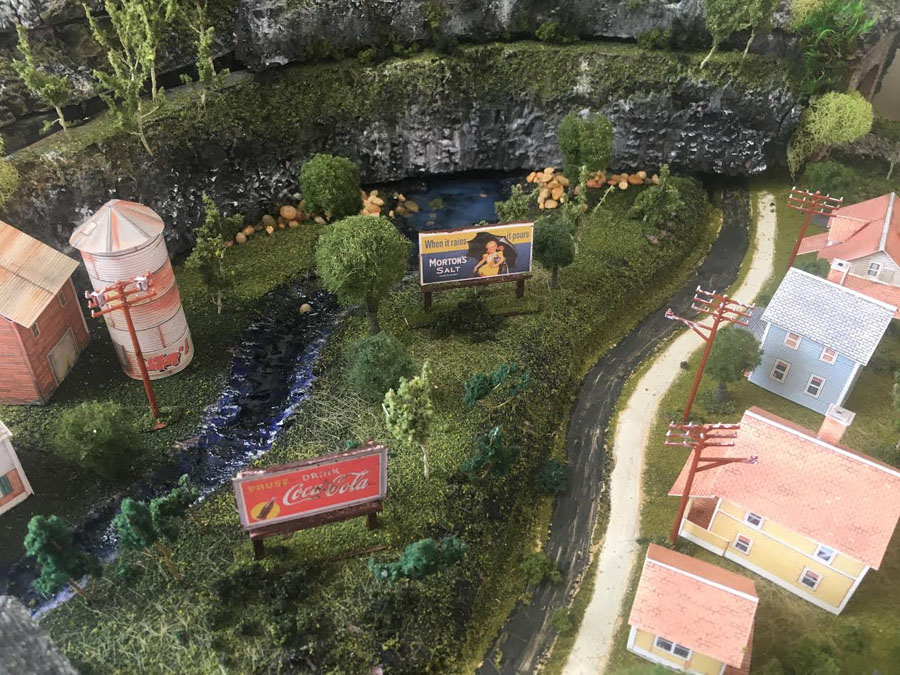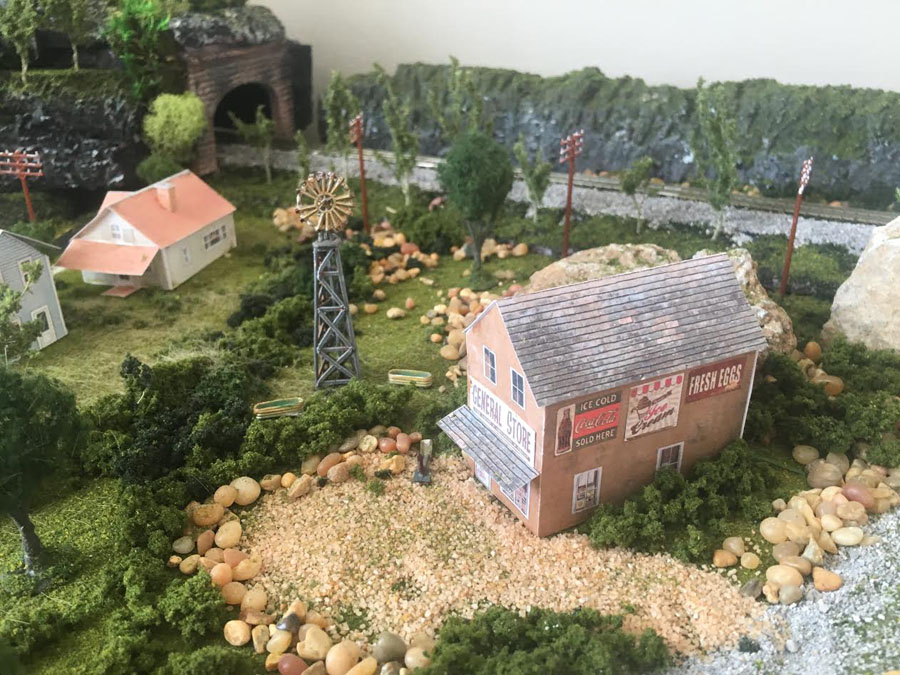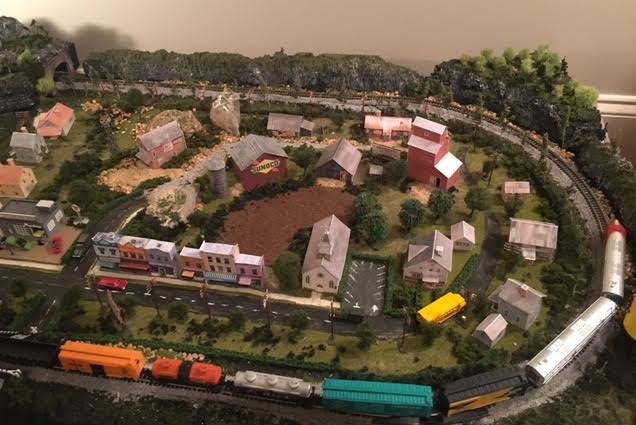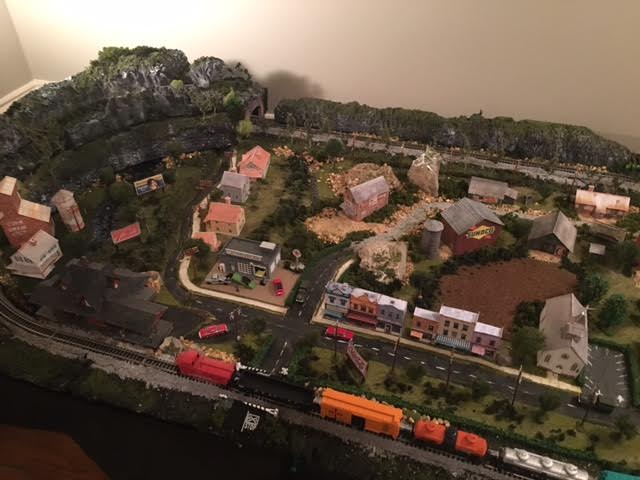David’s been in touch with his HO scale train layout.
His journey is one many of us will be familiar with.
“Al:
I thoroughly enjoy your blog; reading it is a part of my morning ritual.
I have learned a lot from your contributors. Thank you for all you do to promote our hobby. You provide a great service to all of us train buffs.
These photos are a long time coming. It has been a journey for me.
It started 63 years ago, when my dad bought me a Lionel 027 train set, featuring a steam engine and tender. As you might expect it had smoke pellets.
Over time he bought me a switch engine and operating accessories. Then him and Mom decided I deserved to have a nice layout.
He built a 16’ x 8’ double track layout with switch track allowing the trains to switch loops.
The main feature, however, was an L-shaped 2 track tunnel made from wood and screen frame stuffed with newspaper and covered in an old sheet, which Mom painted with earth colors and Dad installed red and green lights hooked up to a 2-way switch at the entry of the tunnel. I was the envy of the neighborhood.
In my thirties, a friend and train enthusiast encouraged me to unpack my 2 trains and set them up.
This began a 35-year adventure, which resulted in a 20’ x 30’ basement filled with 14 O-27 trains and a bouser trolley and a Lionel bumper car trolley. Oh yes, the layout was filled with operating accessories. For me, the fun of the hobby became modeling.
Operating the trains did not have the thrill I had when I was a child. I moved 8 times during this period, so my benchwork had to become portable.
I used standard 2” x 4” legs bolted to ½” plywood framed by 2” x 4” frames.
The key lesson from multiple teardowns and rebuilds was that getting the track work right was critical. As a result, I used a lot of half-straight track in my curves to avoid derailments.
When I turned 70, I realized that my railroad empire was no longer fun, because I did all the modeling and building that my basement allowed.
I ended up selling my collection to an eBay trader for about 45% of the collection’s original value. The only thing I retained was my original steam engine and tender, in memory of my dad. It did not take long for me to have “seller’s remorse.”
After giving the idea of starting a new layout, I decided to convert to HO scale. I think, the pictures tell the story of my new adventure.
I love the realism of the HO scale and the building and scenery options are far more extensive Than O-gauge.
What I have found is that I am spending more time and detail in creating the scenery for my layout.
I hope your readers enjoy the pictures.
Best Wishes,
Dave”
A huge big thank you to David for sharing his HO scale train layout – I did enjoy his narrative.
So many of us started this journey with a Christmas gift when we were young and full of wonder.
That’s all this time my friends.
And if today is the day you stop dreaming and start doing, the Beginner’s Guide is here.
Best
Al
That’s all for this time folks.
Please do keep ’em coming.
And if today is the day you get started on your layout, the Beginner’s Guide is here.
Best
Al
PS More HO scale train layouts here if that’s your thing.
Need buildings for your layout? Have a look at the Silly Discount bundle.
